
New build locomotives at Beamish…
Beamish has a long association with the railway preservation phenomenon of ‘new builds’ – the term used to describe replicas or recreations of locomotives that no longer exist in any material form. The description had broad connotations, and there are any number of ‘original’ locomotives at work today that have very few components, if any, that originate from the working life of that locomotive – the Talyllyn Railway’s No.1 and No.2 are good examples of this, both having been substantially reconstructed since 1951, when they became heritage artefacts.
There is, in my view, absolutely nothing wrong with this, and recent informal discussion around what makes a locomotive authentic was an interesting exercise in considering whether the actual material, or the spirit of the design and working guise, is the more important factor in determining authenticity (rather than originality, which is material based).
There are many reasons for creating a new build. Often it is to recreate a lost class, motivated by nostalgia. Others have been built to understand a lost technology (as in the case of the Beamish trio) or recreate something that has a modern purpose (as is the case for Samson). The revived Hunslet Engine Company at Statfold sought to establish whether there was a market for new Quarry Hunslets, and having erected two, they still have a considerable number of parts in stock ready for any further orders to be fulfilled.
Looking back through the visiting engines gallery of this blog, it soon becomes clear just how many new builds there are and how many of these are either based at Beamish or have visited. I therefore thought that a saunter through these would be an interesting exercise and a good topic for a blog post…
Early Railways – The Beamish replicas

It was based on Locomotion’s latter guise (as the original appears at the Head of Steam Museum in Darlington), after rebuilding following the explosion of its original boiler in 1828 (as a result of the safety valve being tampered with).
Locomotion was always based at Beamish and initially operated between the Colliery and Rowley Station, until completion of the Pockerley Waggonway created a more suitable environment for it to operate in. Prior to this, the replica was heavily rebuilt and a rake of appropriate rolling stock created to operate with it.
Locomotion No.1 toured a number of heritage railways until arriving at Pockerley in 2001 to inaugurate the services at Beamish. A useful reminder that the waggonway celebrates its twentieth anniversary year next year…
Withdrawn from service requiring repairs to the firebox, the work was deemed to be uneconomic against the amount of dismantling required to complete it. It was therefore placed on display pending a complete overhaul – moving on loan to the National Railway Museum’s Locomotion site in Shildon for static display where it remains today.

It was known of, but its existence became more defined when an oil painting featuring the locomotive was discovered. Eventually this would form the basis of a project to recreate the locomotive for the Pockerley Waggonway, entering service in 2002.
The locomotive is currently out of traffic and located in the engineering workshops at Beamish, awaiting a start on a comprehensive mechanical overhaul.
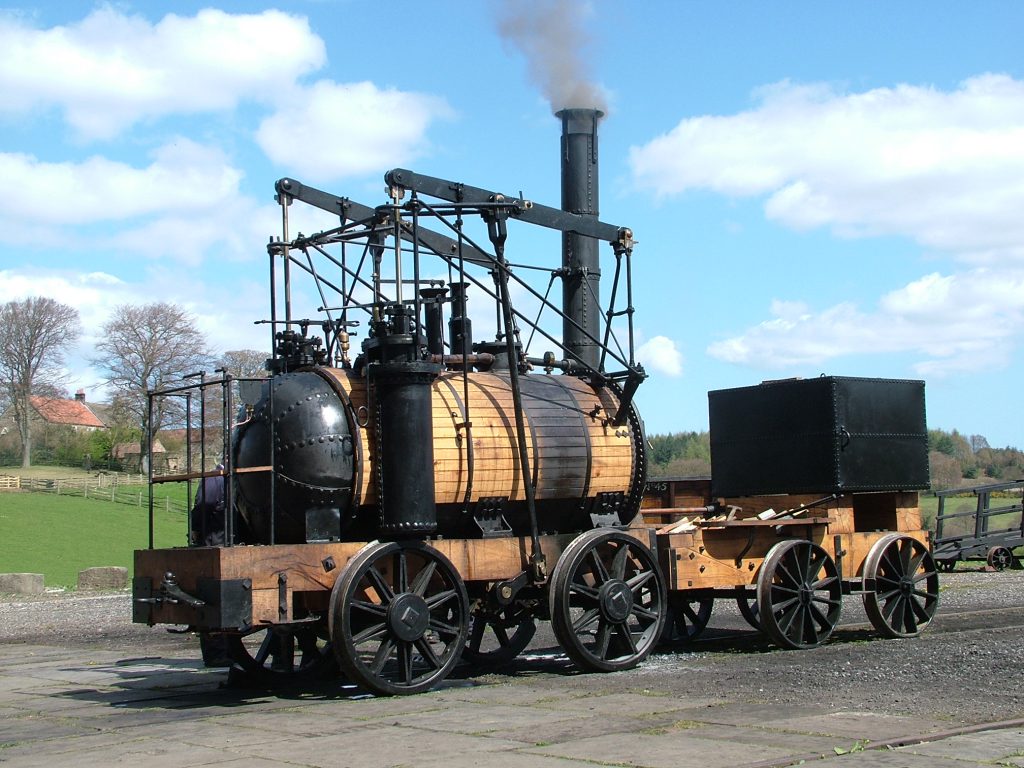
Puffing Billy, our replica (for there is a much older replica, built in 1906 for the Deutsches Museum in Munich)

The project draughtsman was (as with Steam Elephant) David Potter (who later surveyed and drew our chaldron waggons and Seaham Harbour No.18).
The aim was to provide a fleet of three locomotives, of which one could be available for hire or repair. As time has passed, we have seen Puffing Billy latterly operate trains on the Pockerley Waggonway almost single-handed. Locomotion No.1 managed this feat for a number of years, as did Steam Elephant whilst Puffing Billy was under repair or touring. These replicas, now bedded in and well understood, are very reliable and always popular with visitors to the museum.

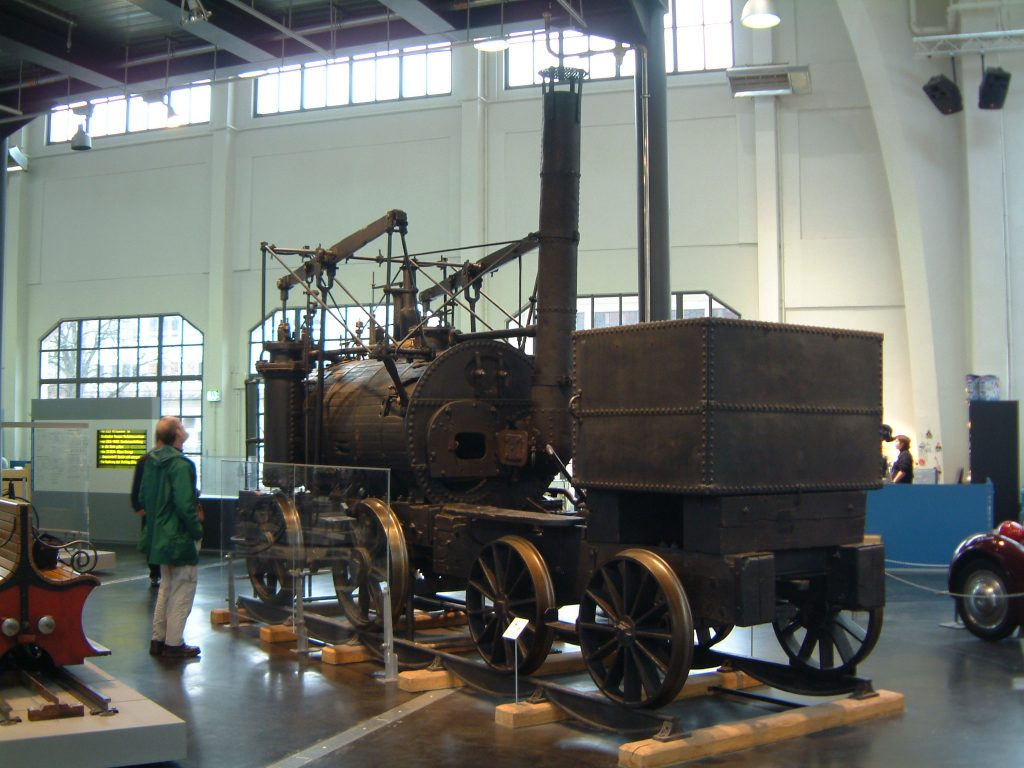
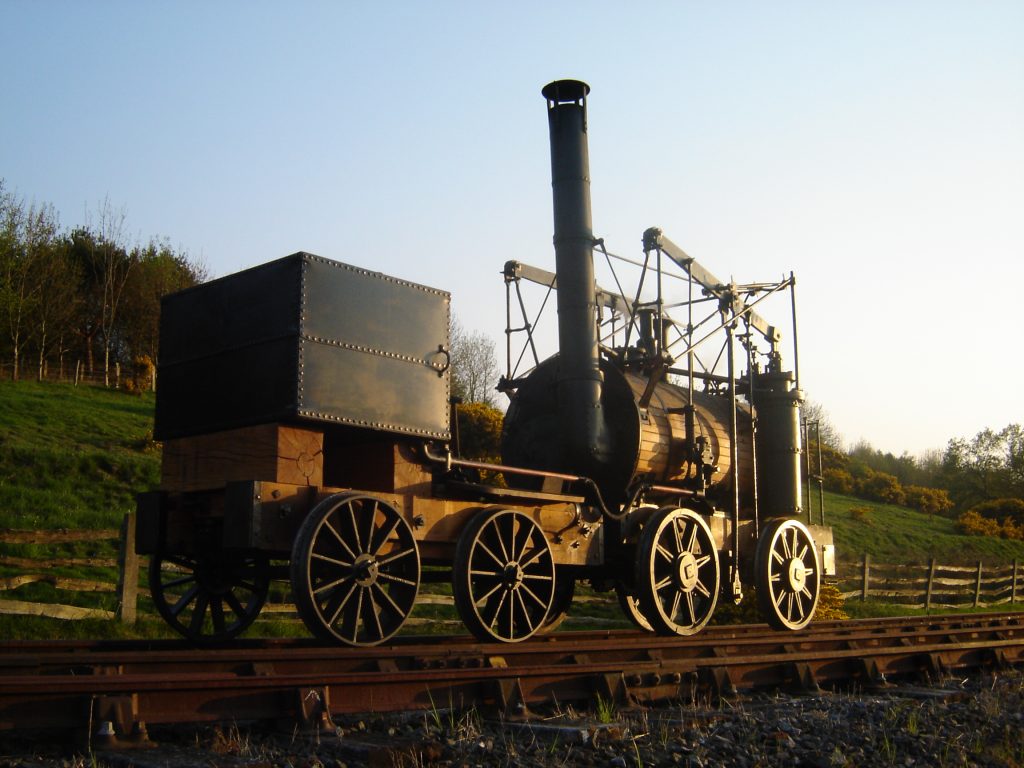

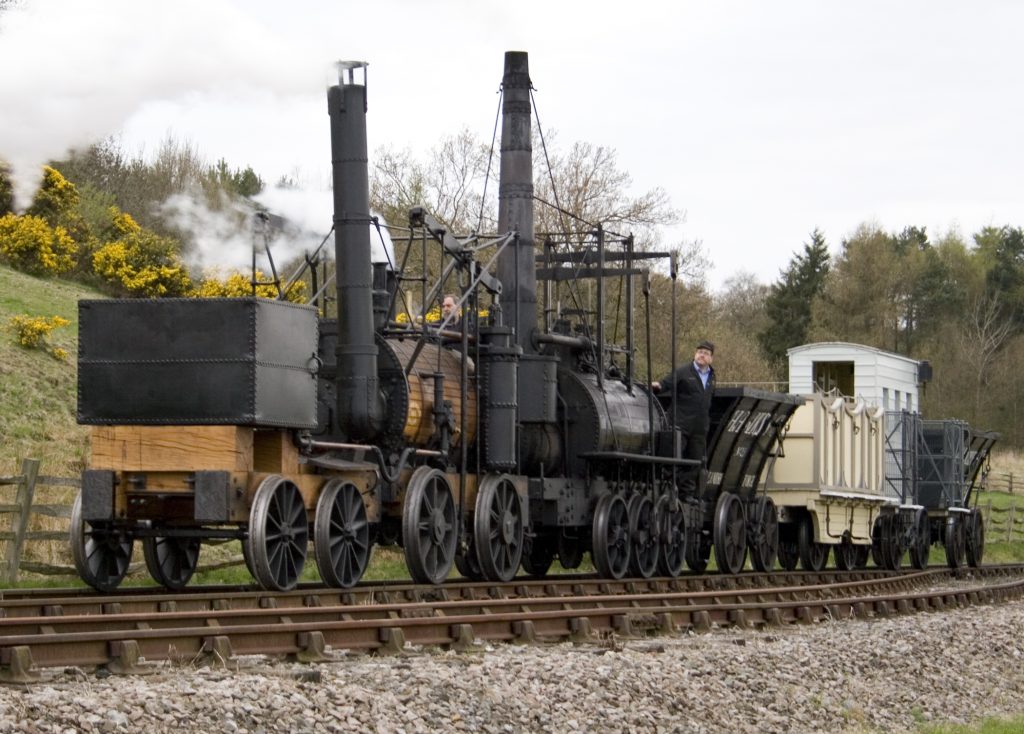
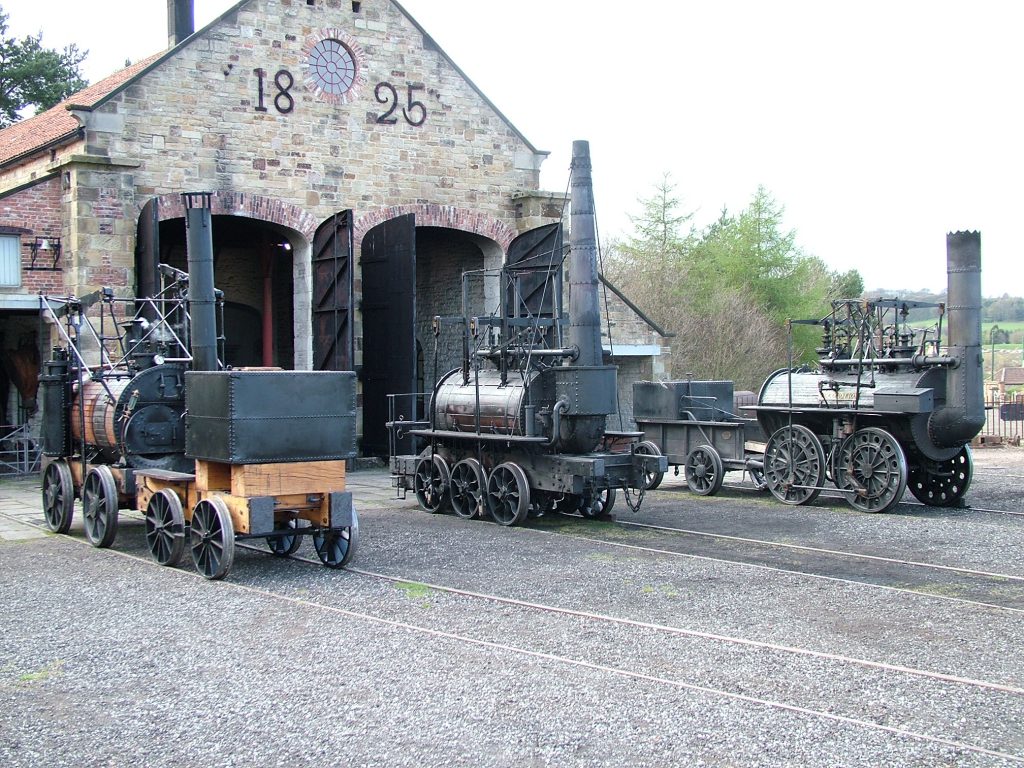
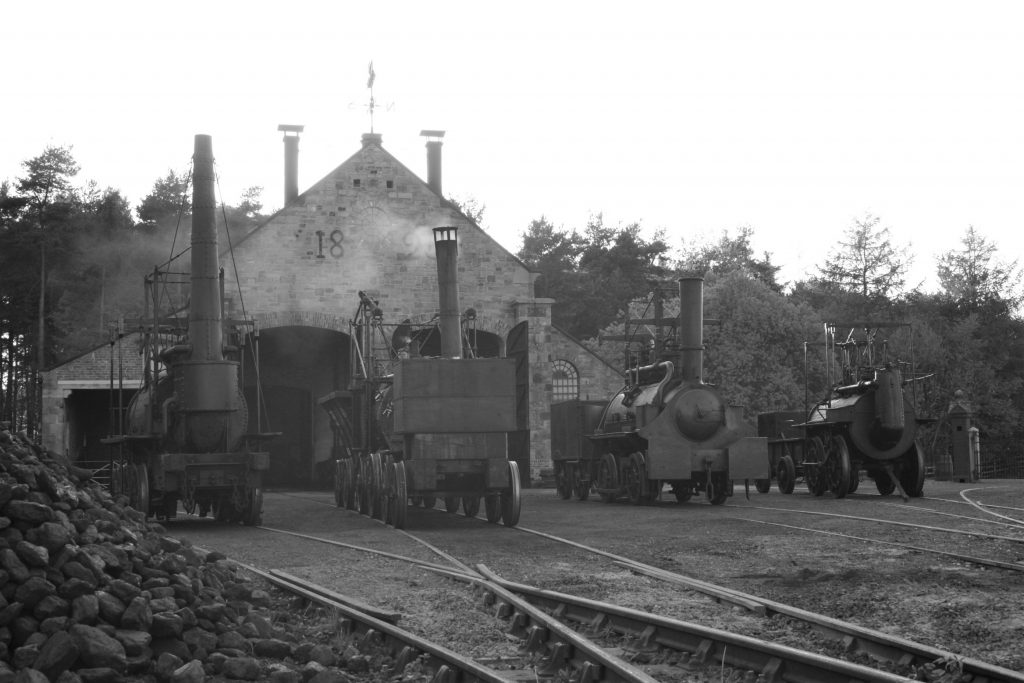
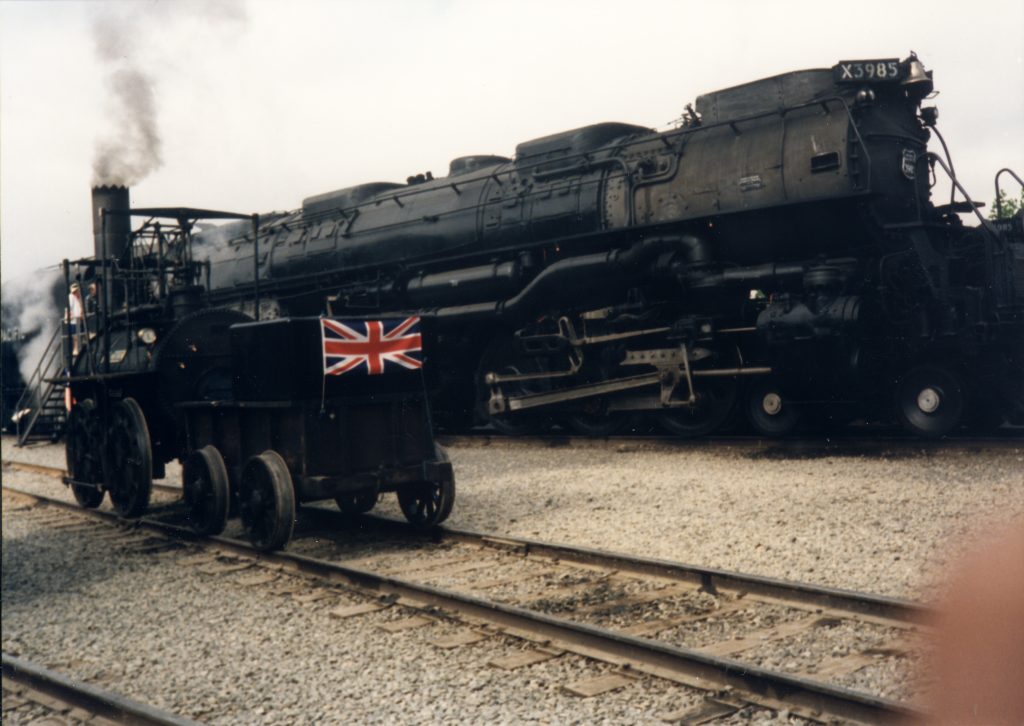
Locomotion and Union Pacific Big Boy, at the Sacramento Steamfair 1991 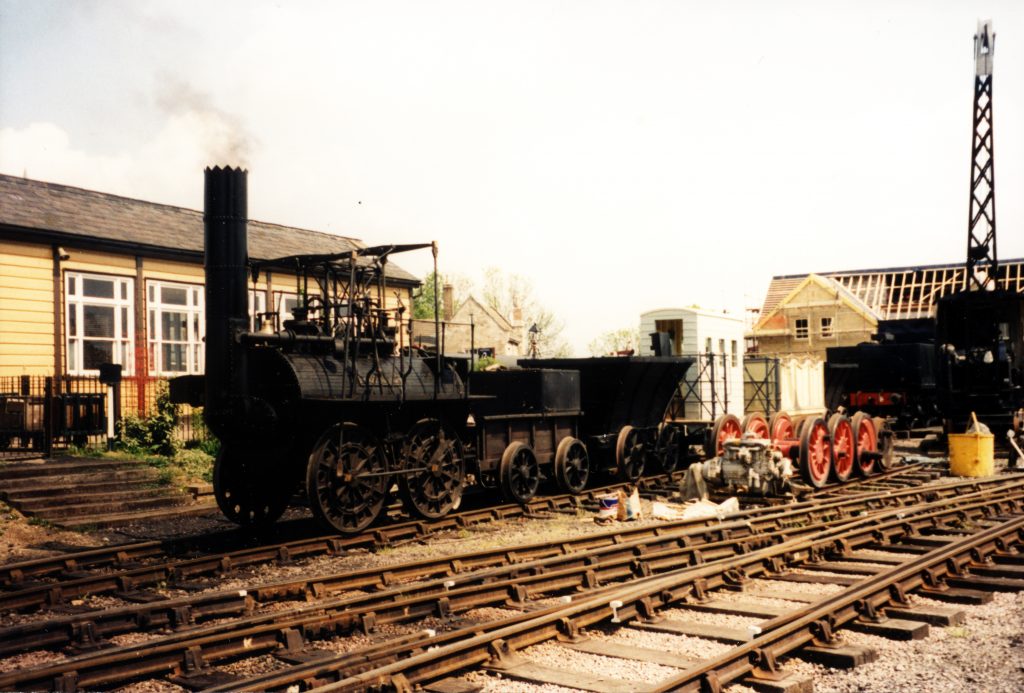
Locomotion at the Nene Valley Railway – prior to the opening of the Pockerley Waggonway 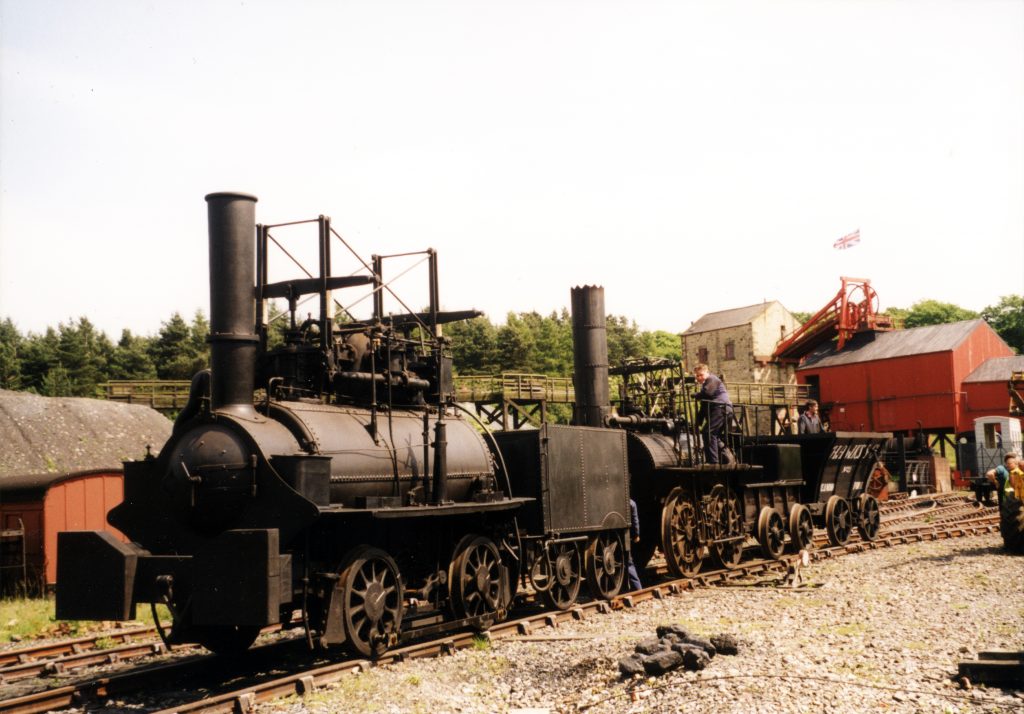
Locomotion shunts Hetton Lyon from the Colliery Engine Works, ahead of both moving to the Pockerley Waggonway 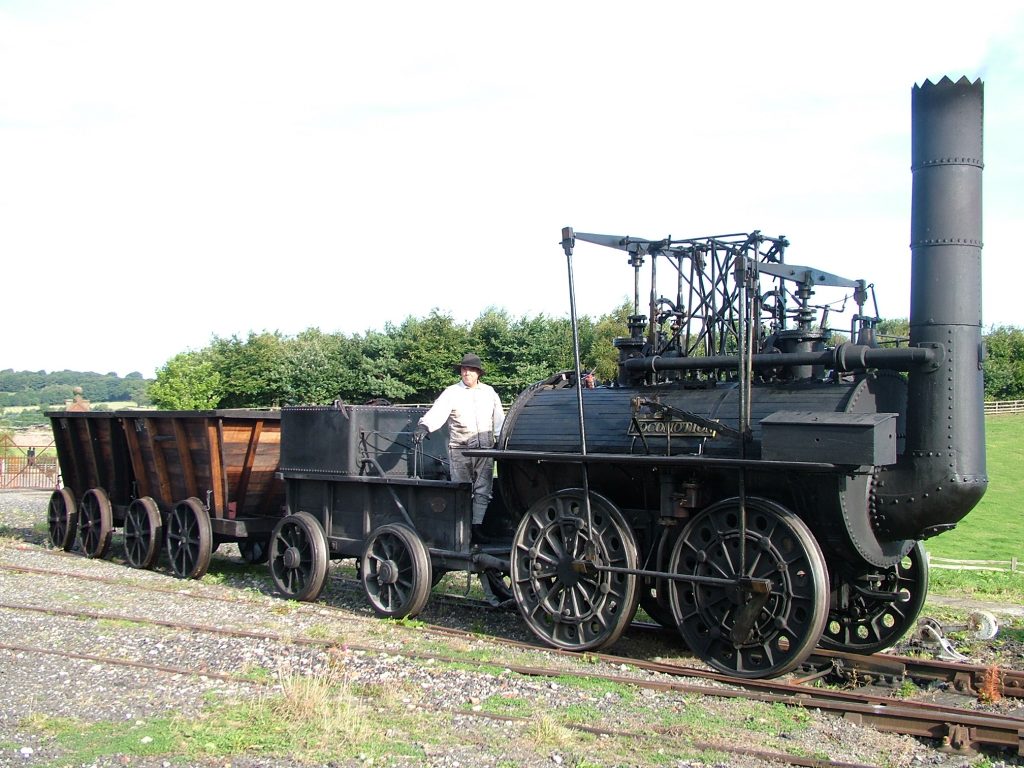
Locomotion with the two early (true) chaldron replicas. 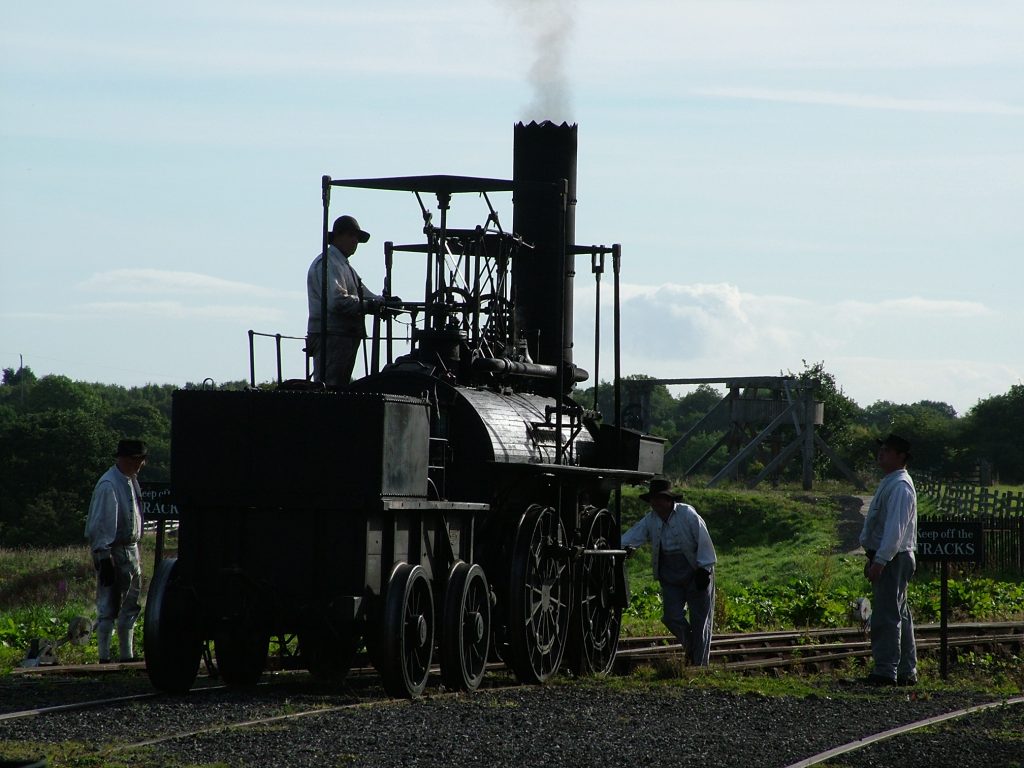
Waggonway at rest 
Waggonway at work 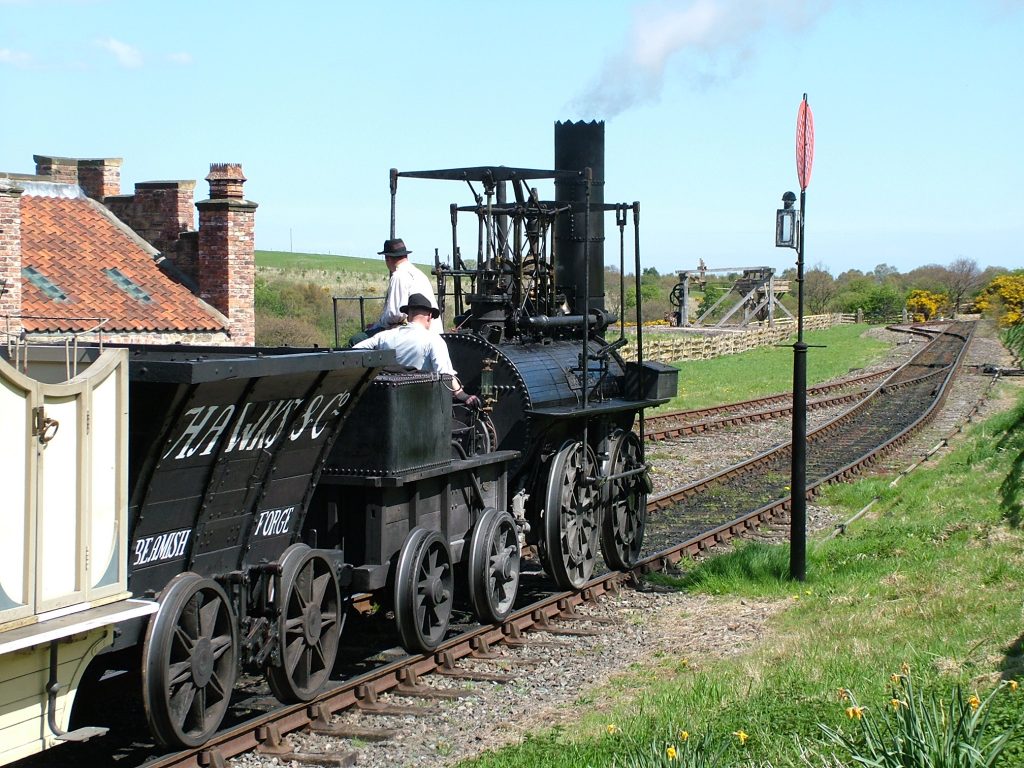
Locomotion sets off along the waggonway, past the disc signal 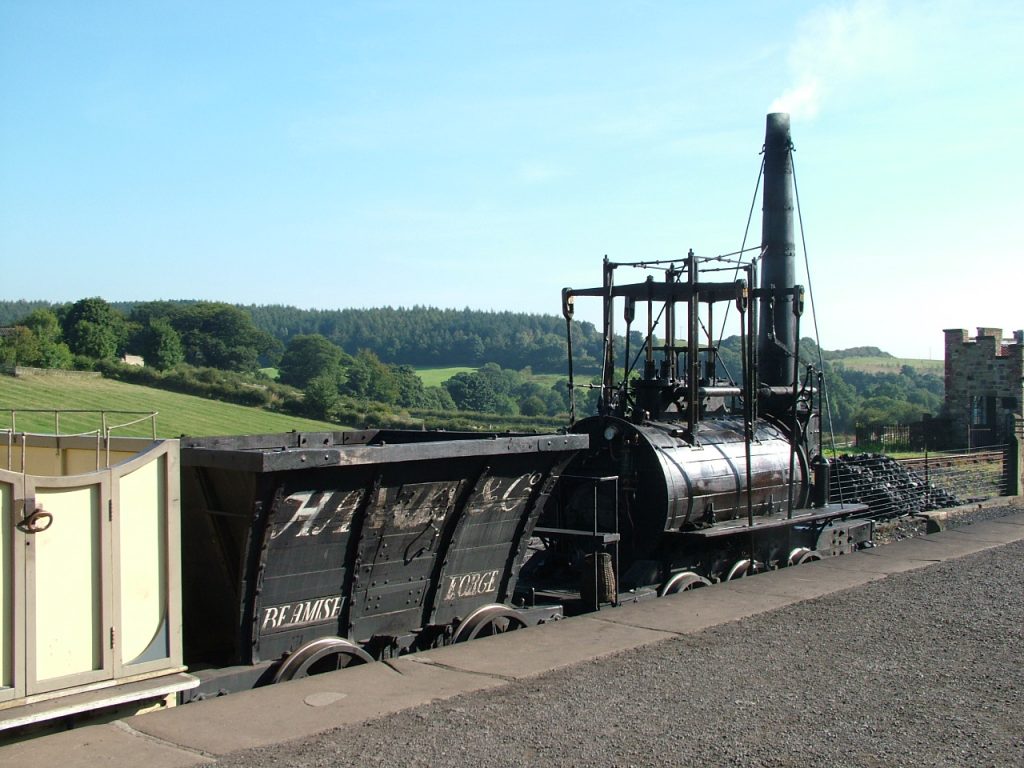
Pockerley Waggonway platform, Steam Elephant 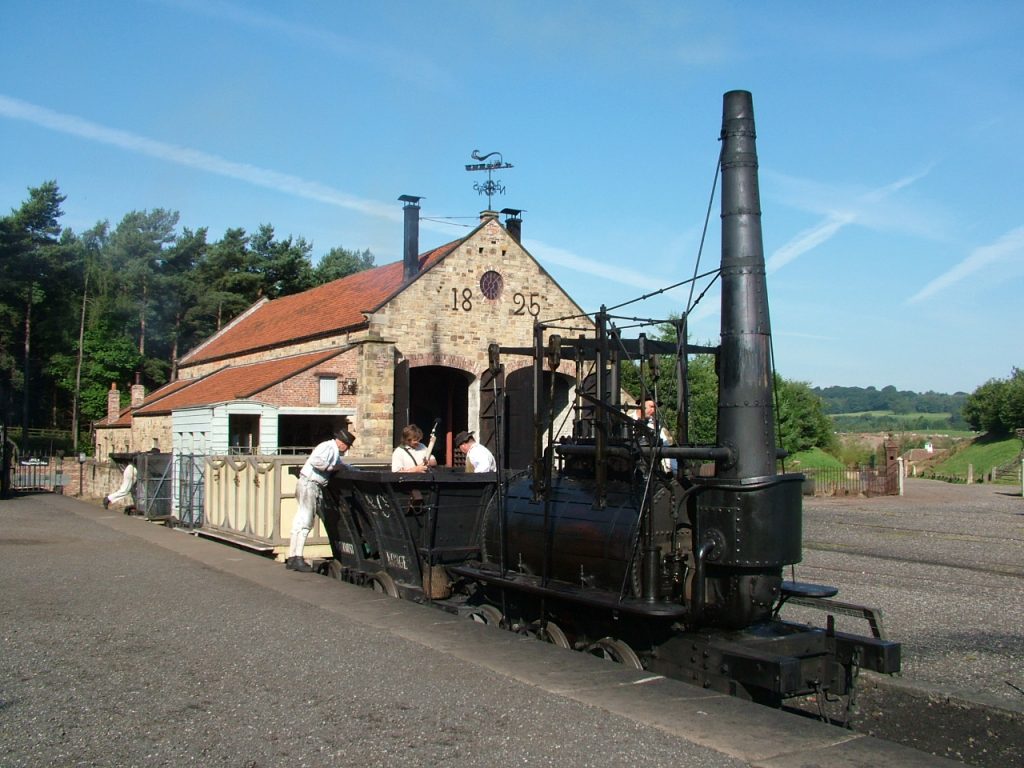
Steam Elephant, Pockerley Waggonway platform and Great Shed behind 
Nearly new – Puffing Billy after entering service 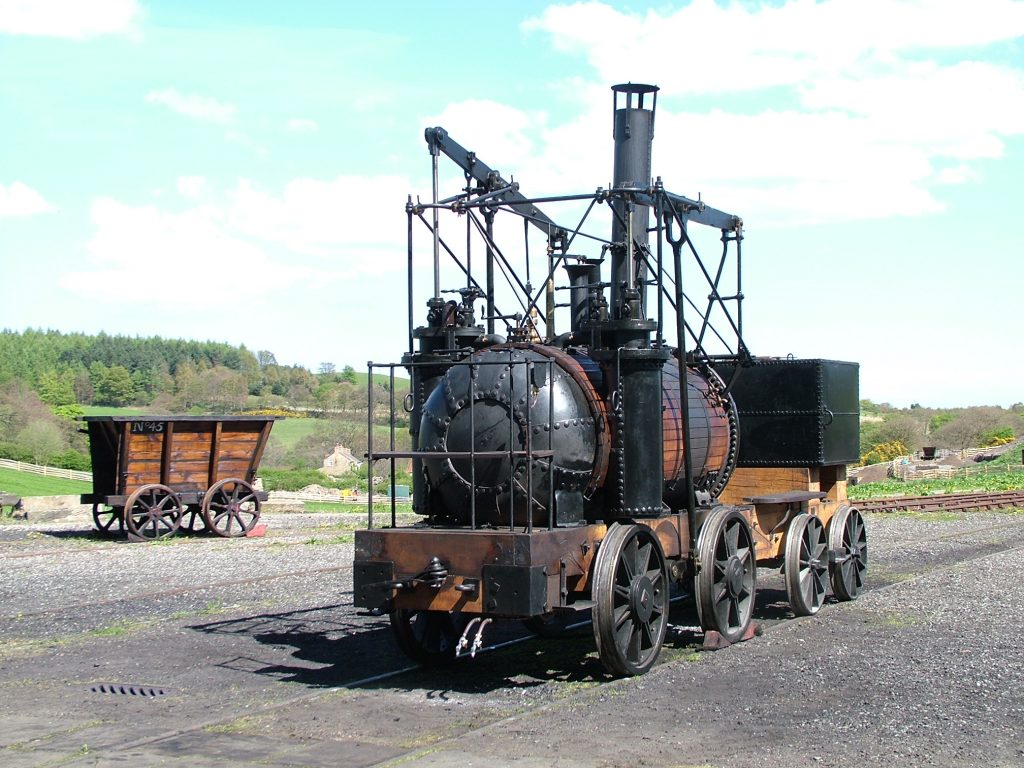
Puffing Billy and 53cwt chaldron waggon 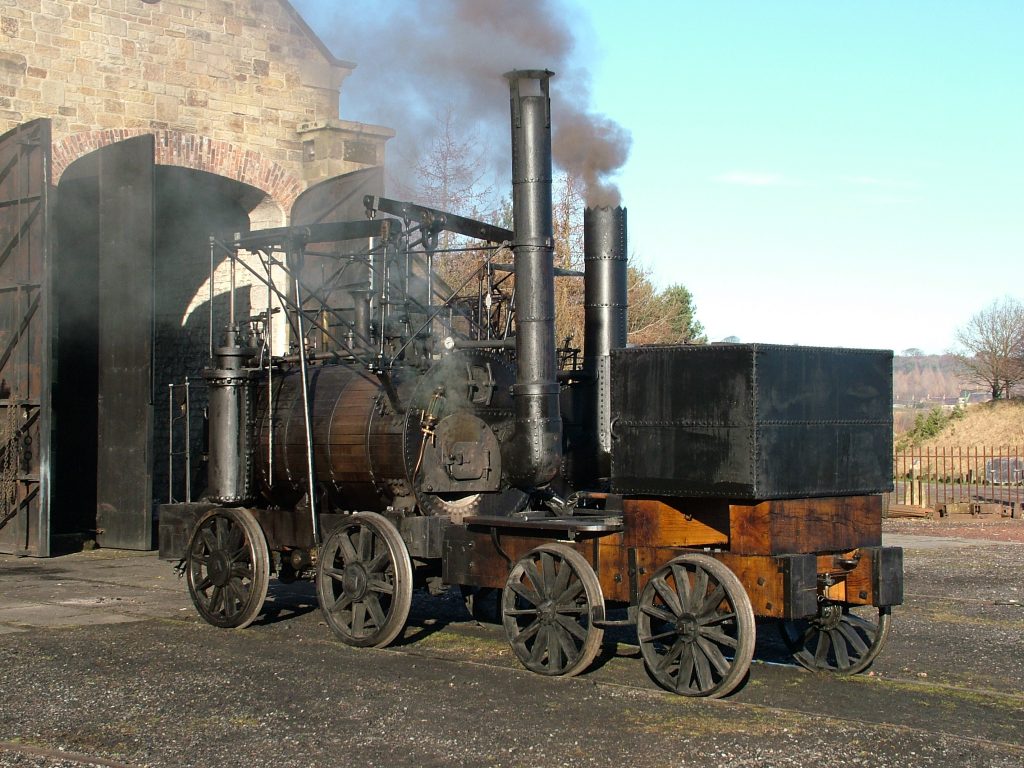
Steam test – Locomotion and Puffing Billy February 2008 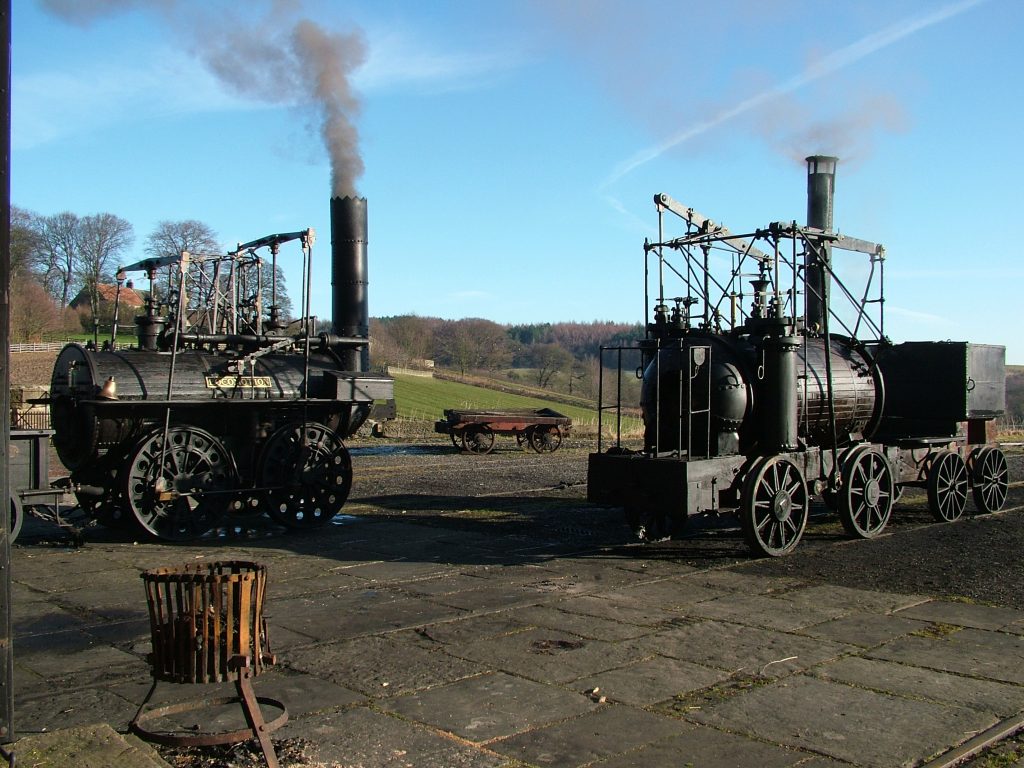
Locomotion and Puffing Billy steam tests February 2008 
Locomotion steam test February 2008
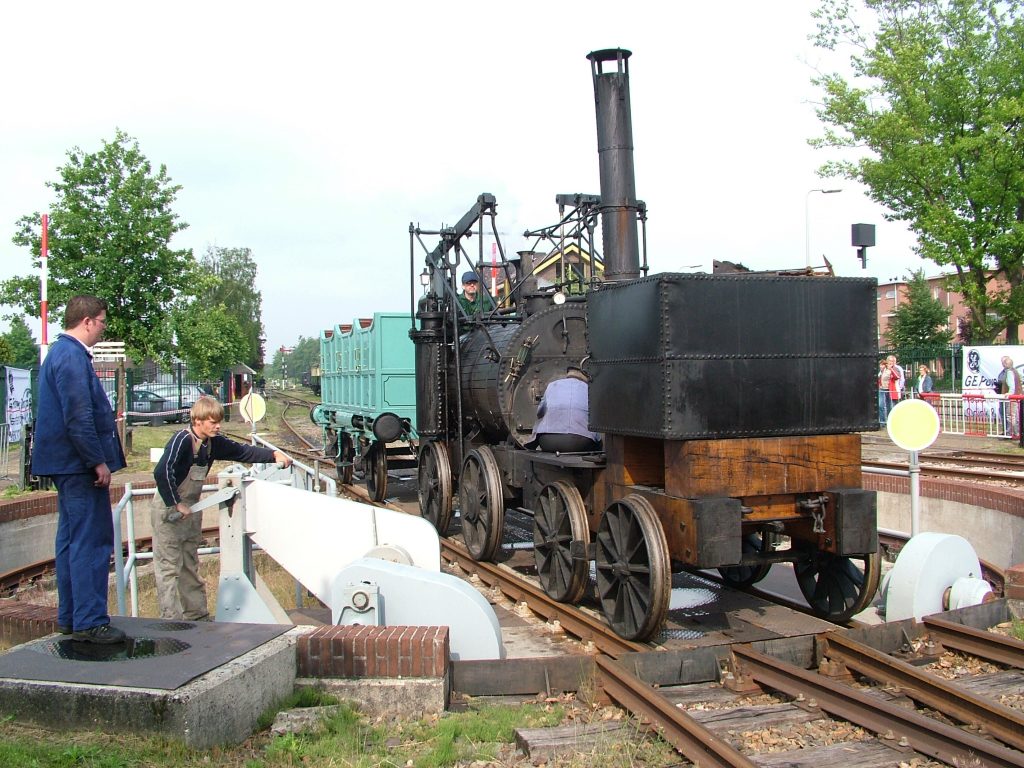
As we needed our passenger train at Beamish, we borrowed one of the National Railway Museum’s Liverpool & Manchester coaches for the trip. Rocket was, as I recall, under overhaul at the time and as the braking systems were incompatible, we secured a grant to enable Alan Keef Ltd to replace and upgrade the system on the coach, so that it would be compatible with Puffing Billy. As this twin-line air system has become one of the UK standard braking systems for some narrow gauge and most replica standard gauge passenger stock, it was also planned that Rocket would also be modified, so as to be compatible with the modified coaching stock. This all worked very well – and also had a spin-off benefit a few years later as we shall see. Meanwhile, here is Puffing Billy making its first turntable trip! It has subsequently rotated at Barrow Hill and Tyseley. The photos below also show the trip to MBS, including the pasenger shuttles and full line run.
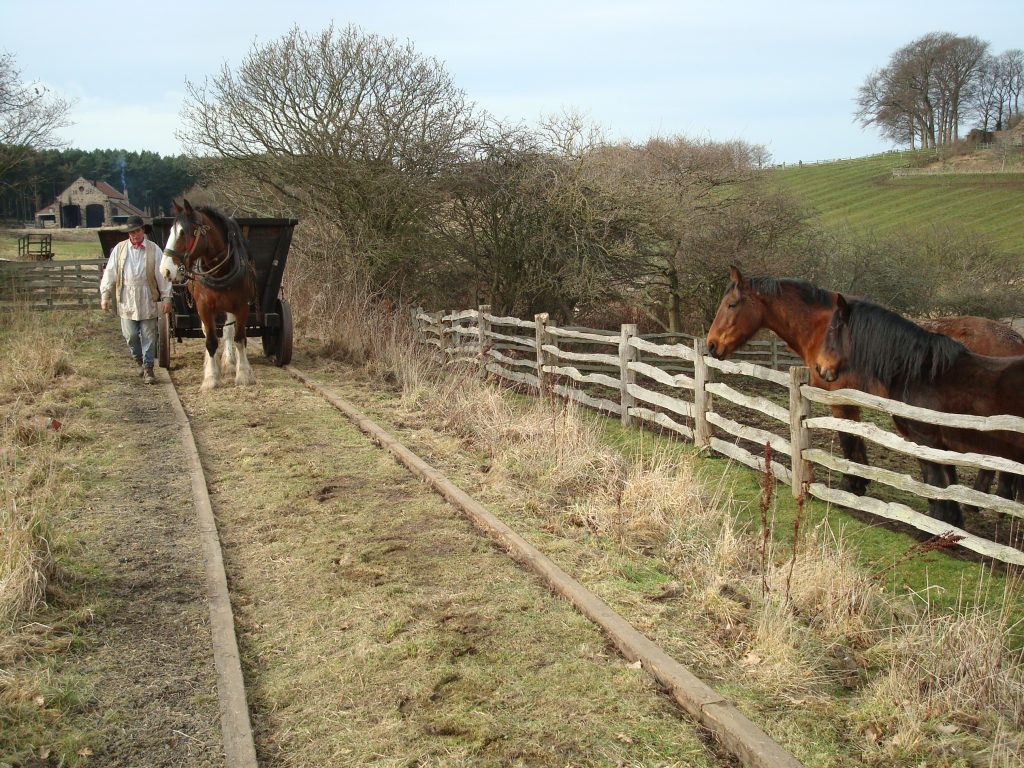
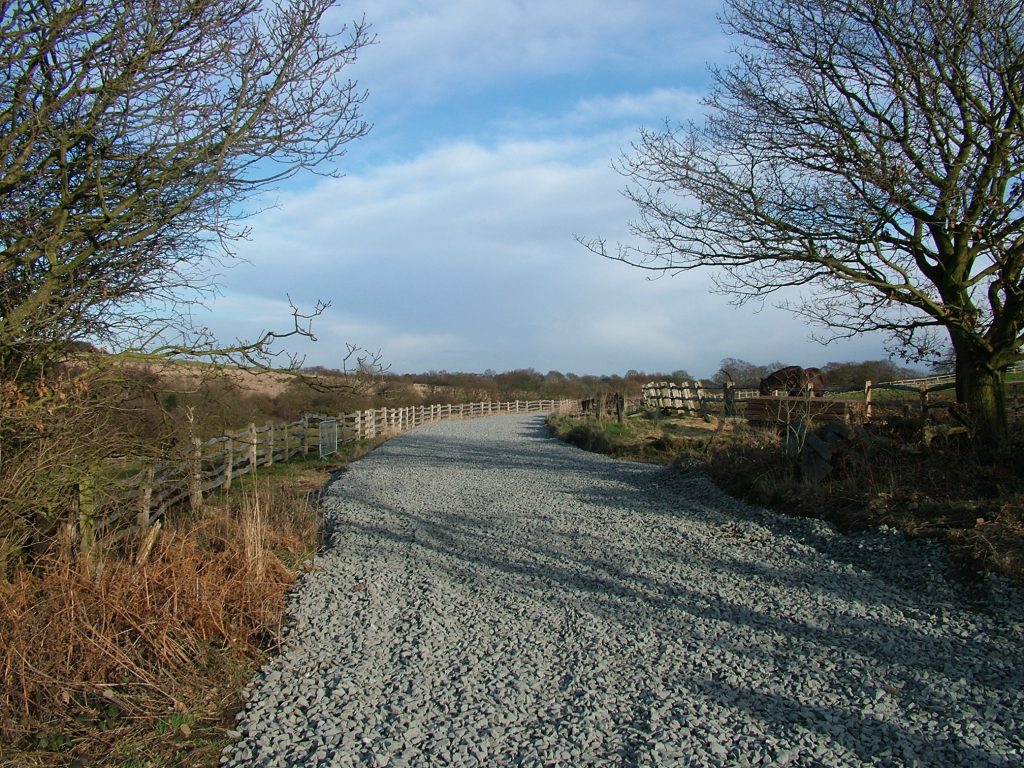
The wooden waggonway route was prepared using machinery, then a deep bed of crushed and broken brick rubble was laid as a base. Over this, conventional railway ballast was spread to a depth of around 300mm. Far more substantial than a wooden waggonway would usually enjoy! 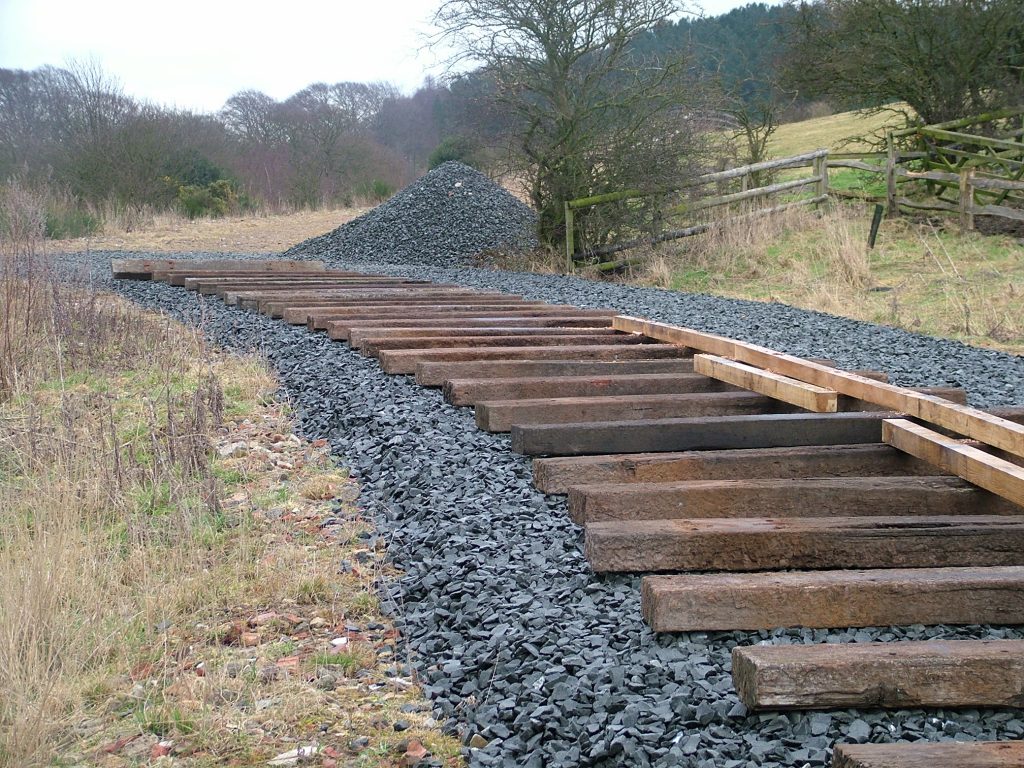
Jarrah hardwood sleepers were laid out onto the base, following the planned route of around 175 metres. 
White oak in square section was used for the rails, with this shelter erected to enable the waggonwaywright (the contractor who had built Puffing Billy’s frames) to progress work in all weathers. 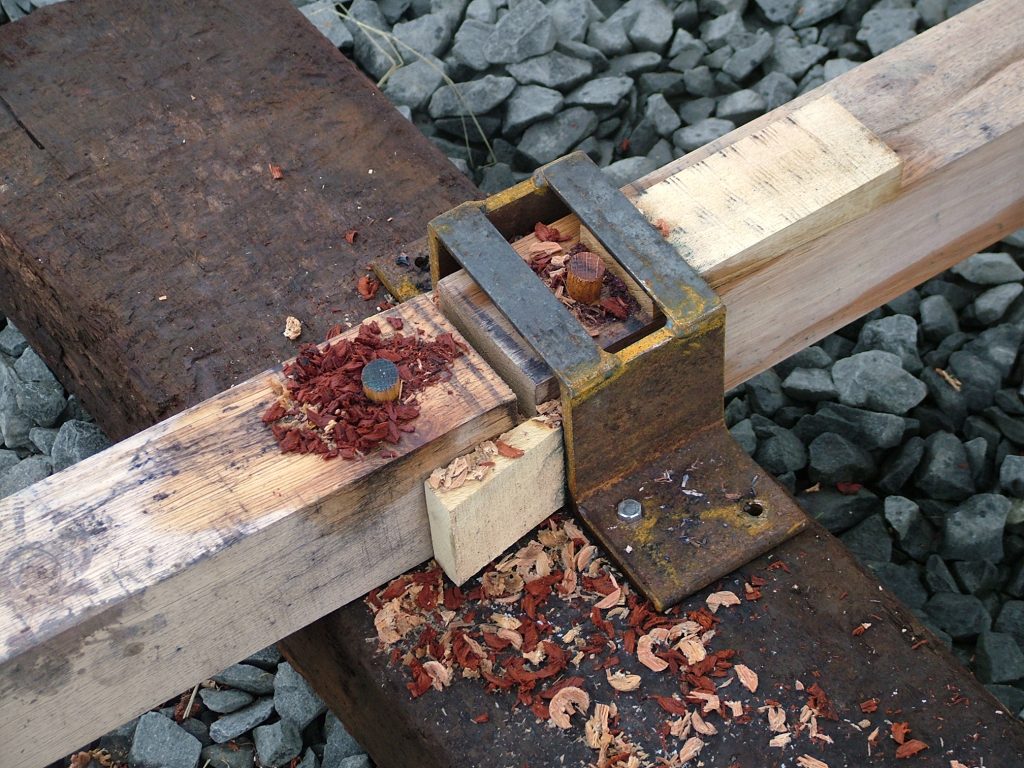
This simple jig and clamp was used to assist with drilling and pegging the rails. Pegs were inserted at angles, to prevent the rails from lifting. 
The route progressed quite quickly, with both rails reaching eastwards here. 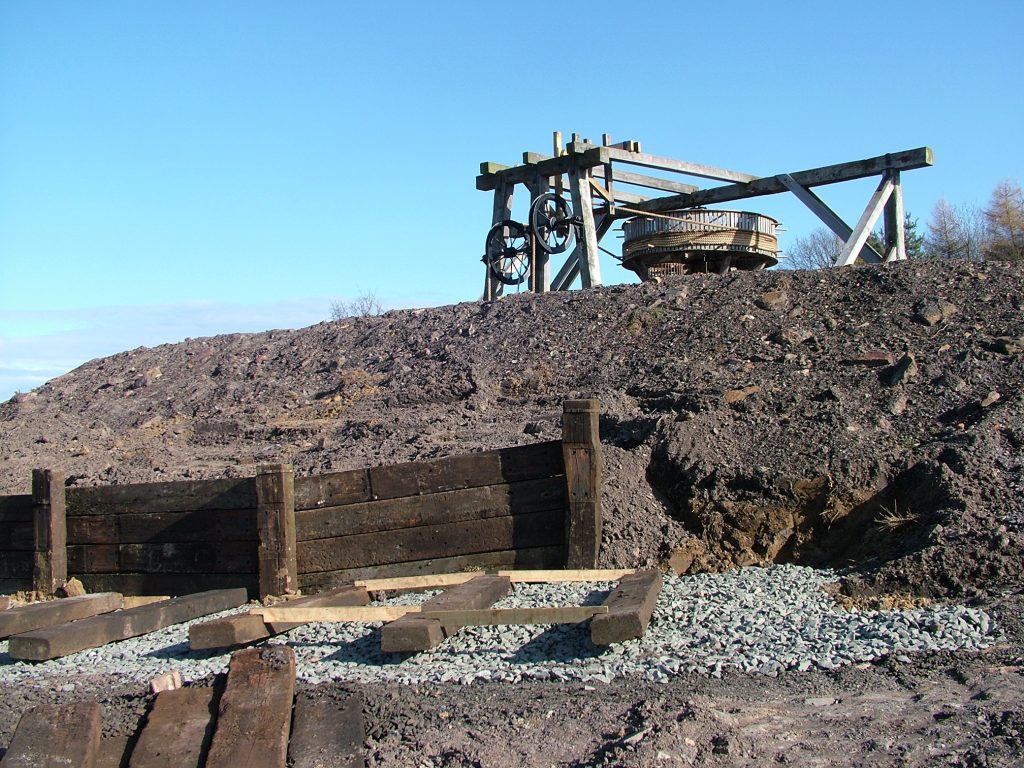
Below the gin, a revetment was build and a brick platform created. 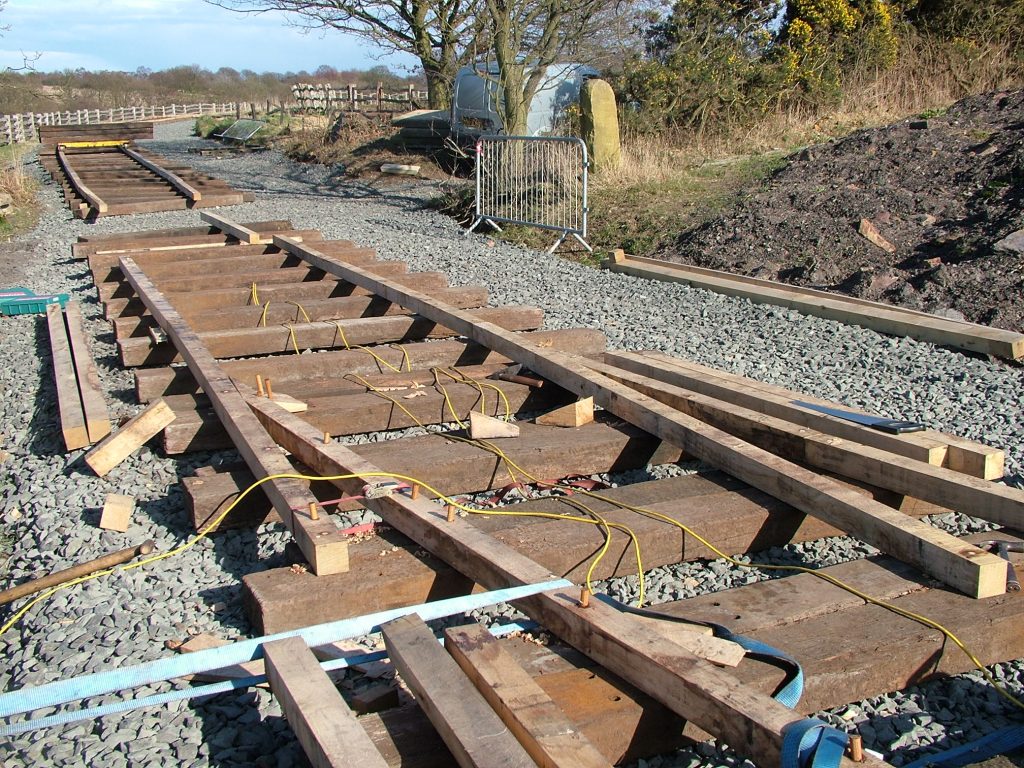
The gin also features a siding – based on the ‘pointwork’ found during the Lambton D Pit excavations in 1995. 
A close up of the pointwork. Wedges would force the waggon wheels to diverge routes and slots were cut to assist the passage of the wheel flanges through the pointwork, requiring no moving parts. 
An overall view of the pointwork and siding area. 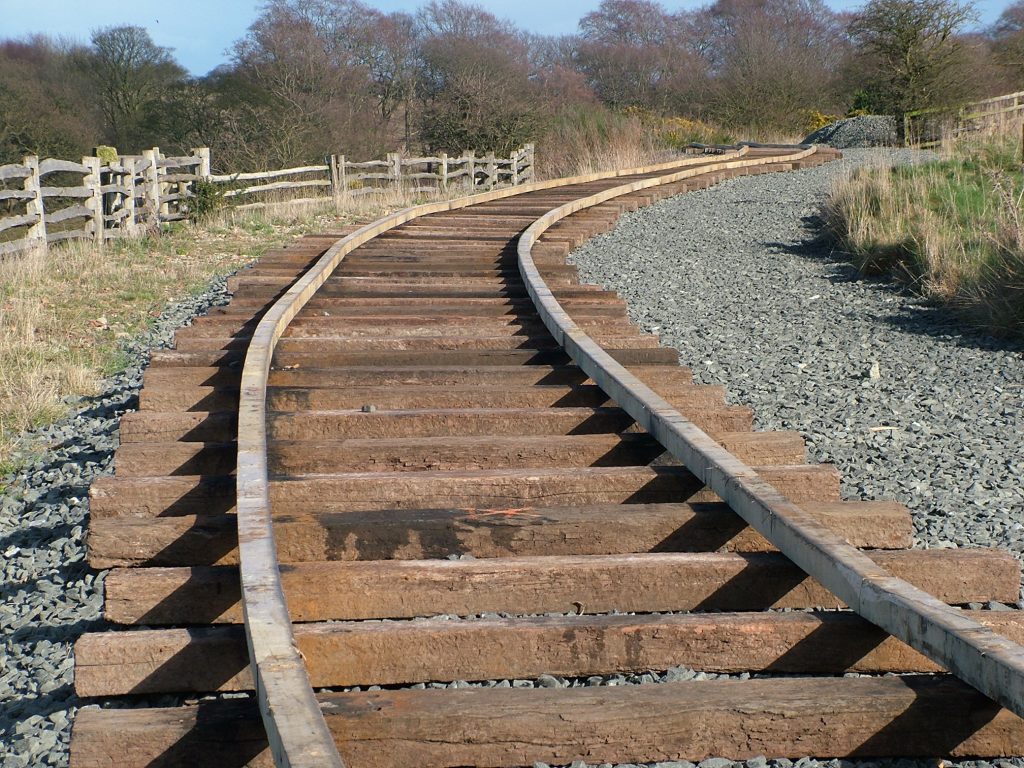
Another view of the waggonway route – at this stage sans check rails. 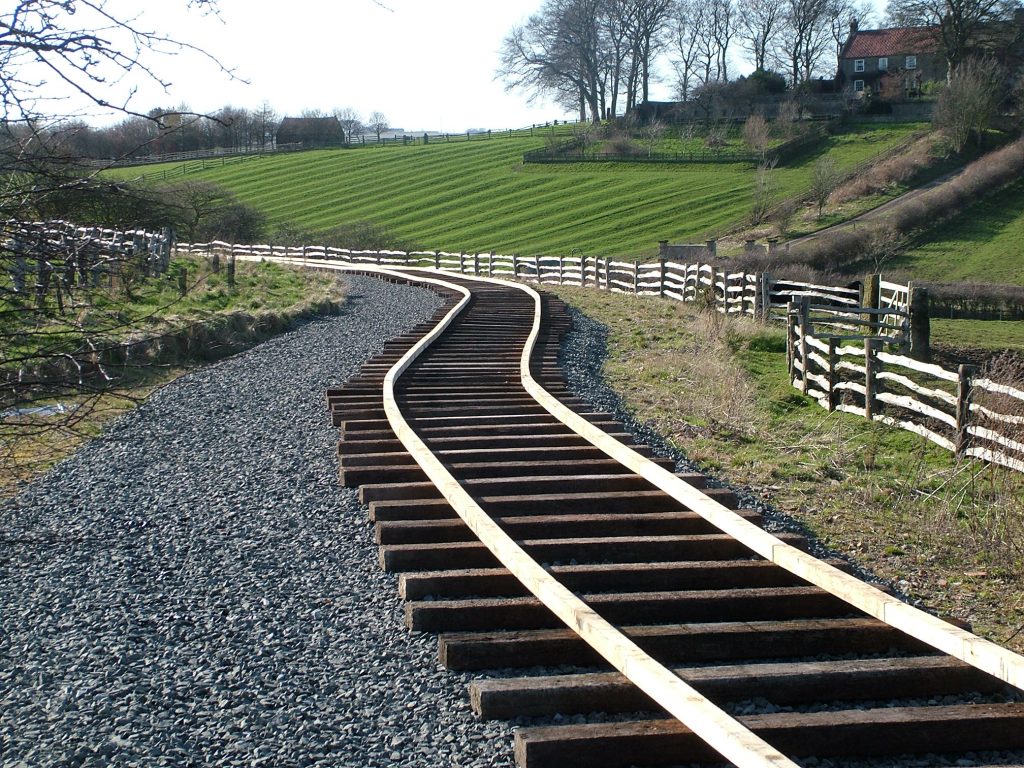
A view looking west this time, showing the route following the field contour. 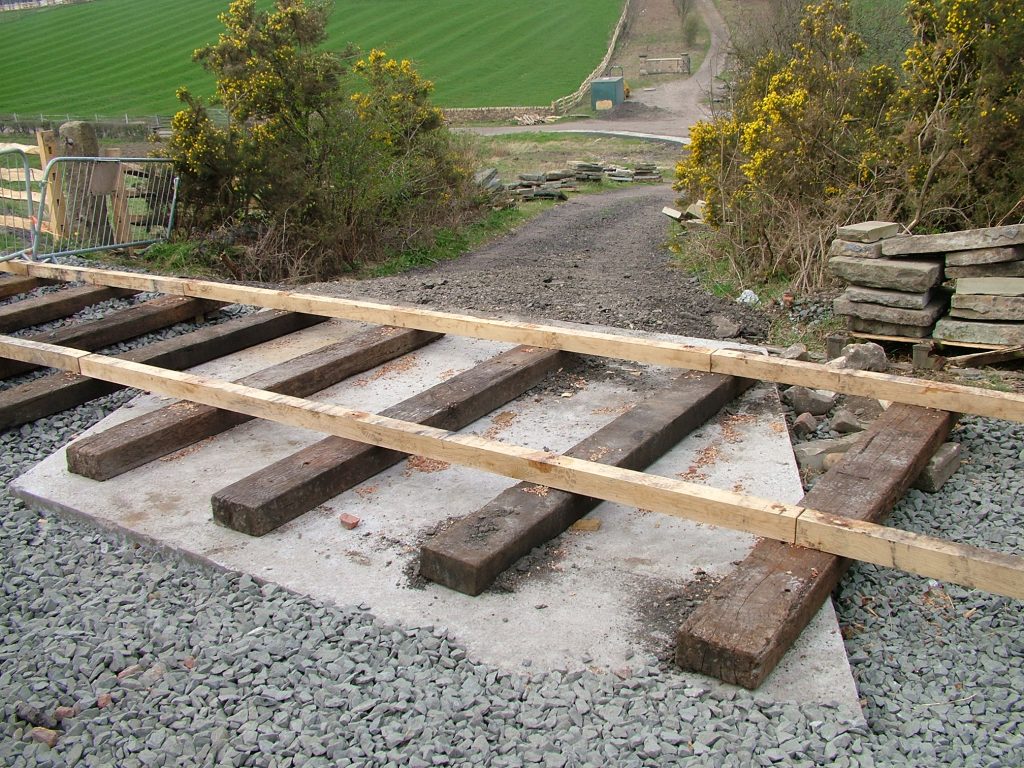
As the route passed over a public right of way, dispensation was required from Her Majesty’s Railway Inspectorate to built a level crossing. A substantial base was put in and a full design was submitted as part of this. 
The inspector considered that, unlike conventional level crossings, the risk was low and was happy to approve the crossing on the basis that it was effectively exempt from the usual requirements for level crossings. The substantial base should ensure its longevity! 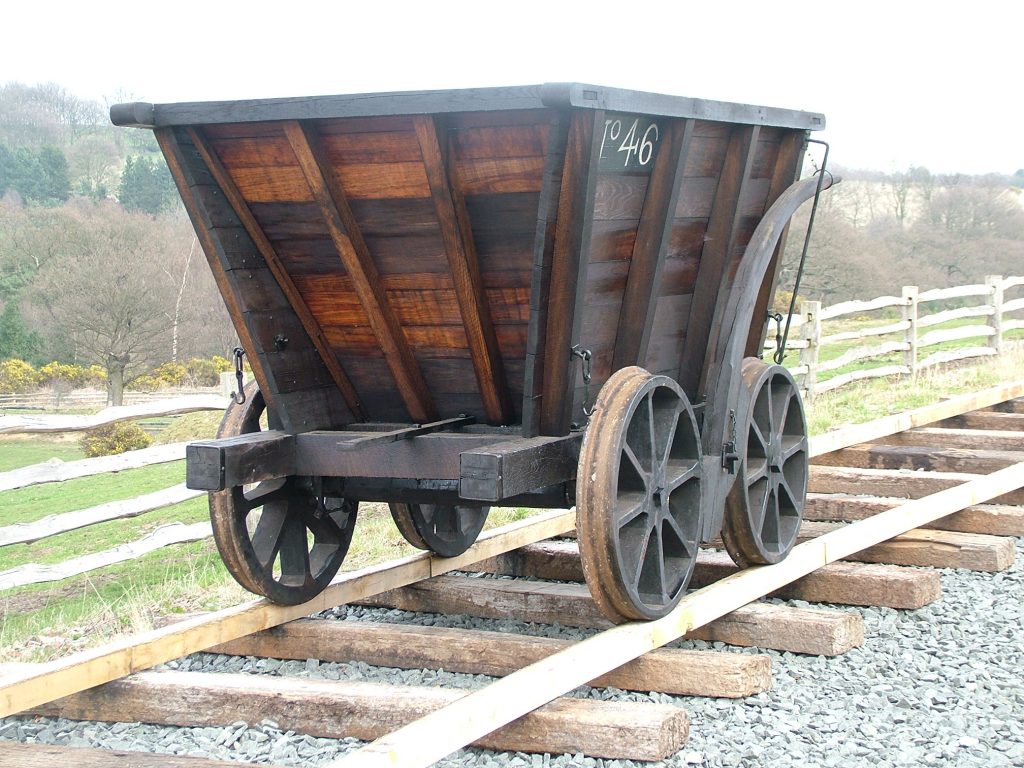
The first waggon was put onto the wooden railway and trialled, by pushing by hand. 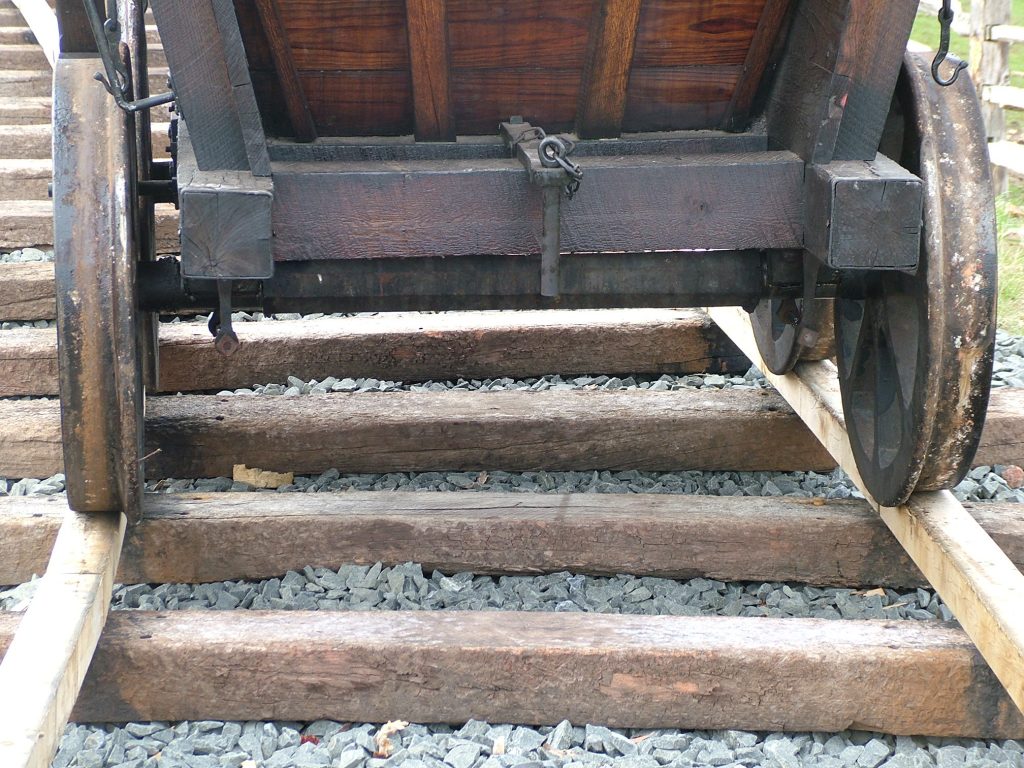
We quickly found that it tended to climb the high rail on curves, so a checkrail was added, standing slightly proud, to assist the wheels around the curve. When pulled, and with the horse taking the inside route (racing line!) the waggon is pulled around the curve more satisfactorily than it is pushed. 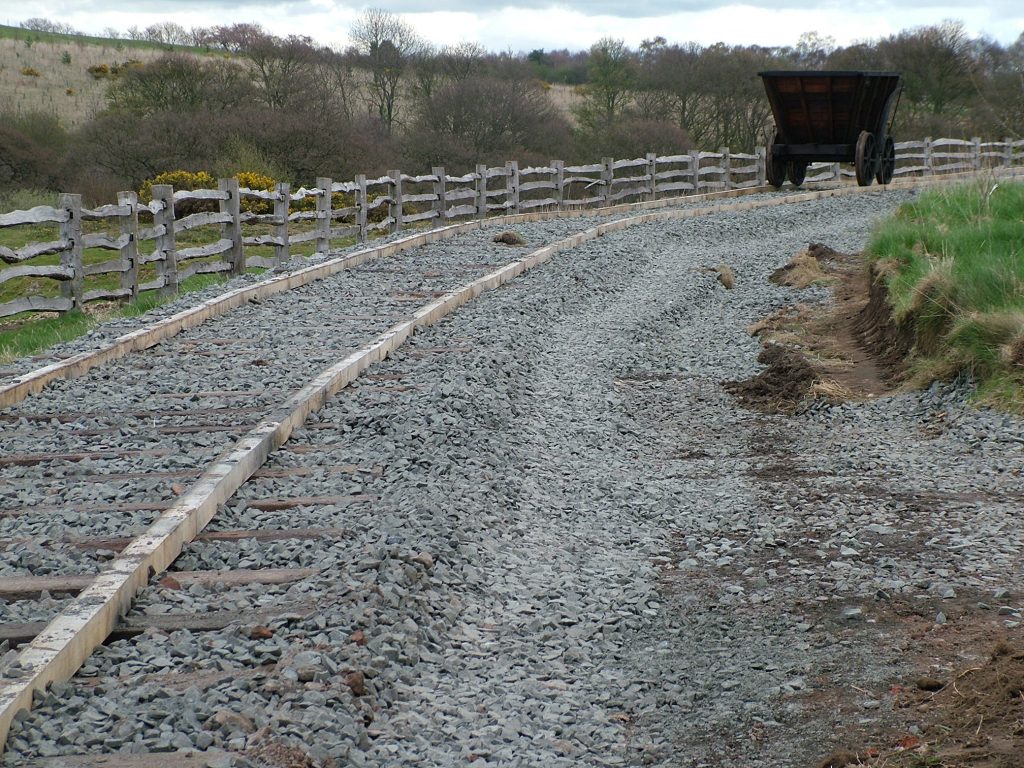
The completed waggonway was fully ballasted… 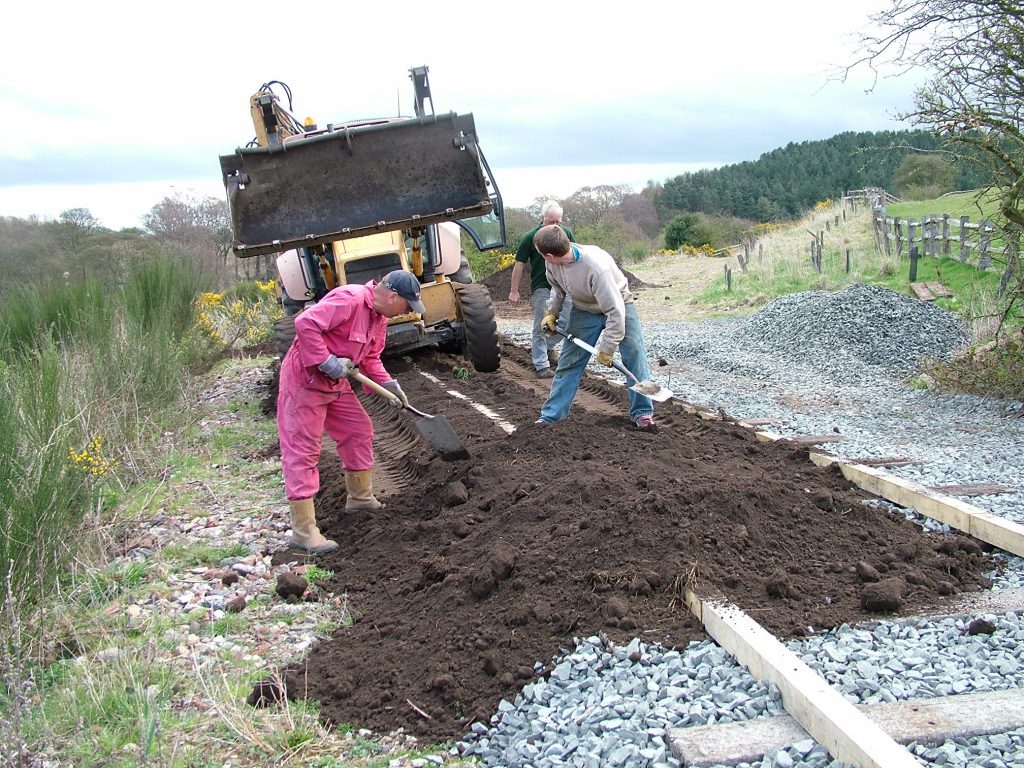
Before then being buried in topsoil. 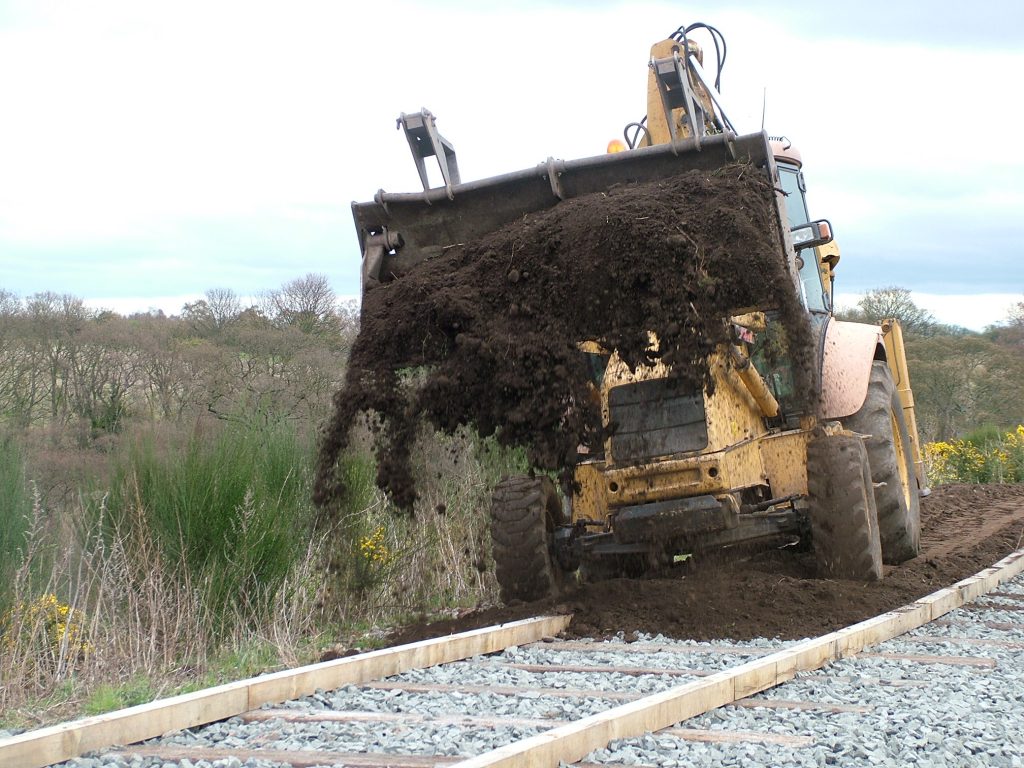
Once the whole route was covered in soil, it was sown with a wildflower and meadowmix seed then left to consolidate. 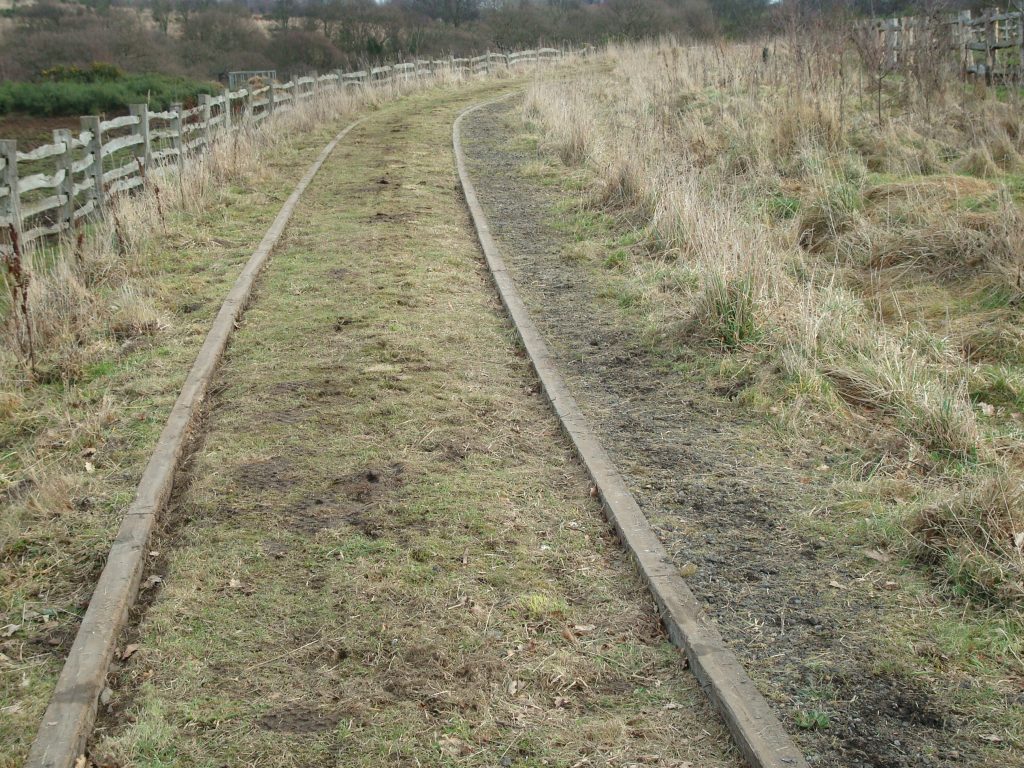
This was the result – a nice turf and easy route for horses. Since the construction work partly breached this route in 2018, we will have to restore this section of the route – but it is an important part of the regional story and a unique exhibit to operate. 
Bonnie (left!) and Peter, testing the waggonway with horsepower for the first time. The tests went well and in many ways it was an anticlimax as the work was well within the capability of a Cleveland Bay horse like this.
Visiting new builds – standard gauge
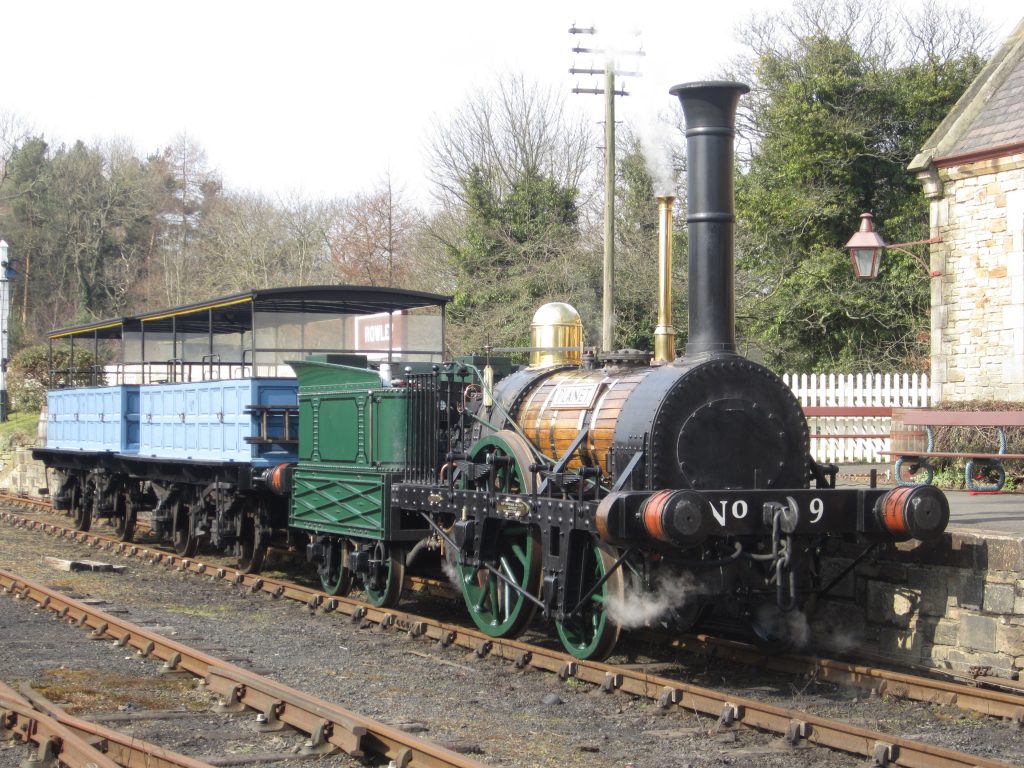
The replica of Planet was commenced in 1986, being completed in 1992. This class of locomotives succeeded Rocket and also mark a move towards what we might recognise as a more ‘conventional’ arrangement of locomotive design.

This replica was also built by Mike Satow’s Locomotion Enterprises, commencing in 1975 and being completed in 1979, in time for the Liverpool & Manchester Railway 150th anniversary celebration sin 1980. Rocket has been rebuilt during its forty-year life and is probably the best travelled and most well known of the working replicas today.
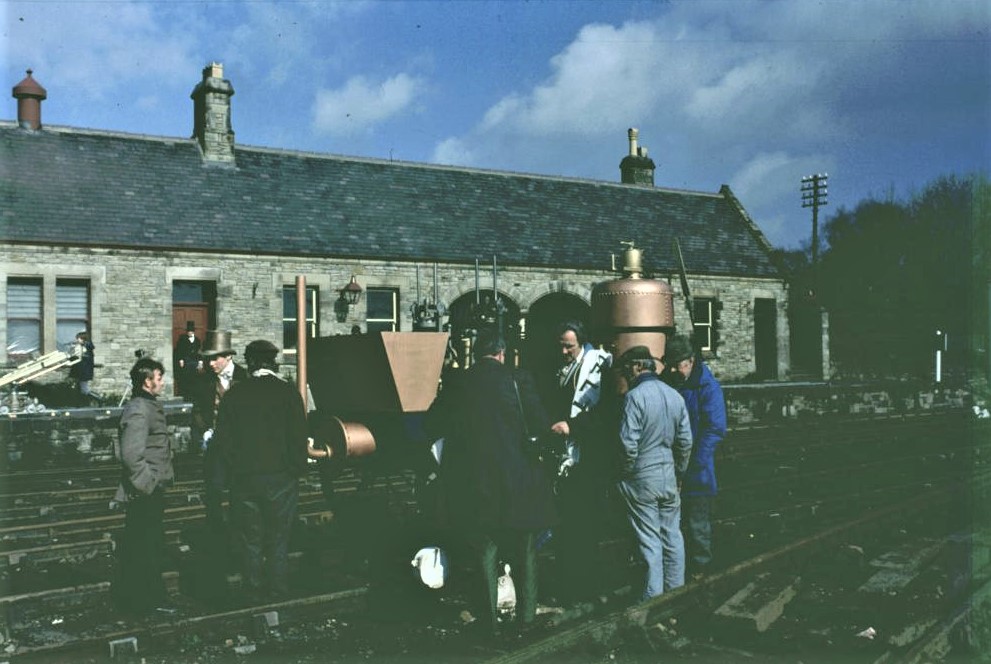
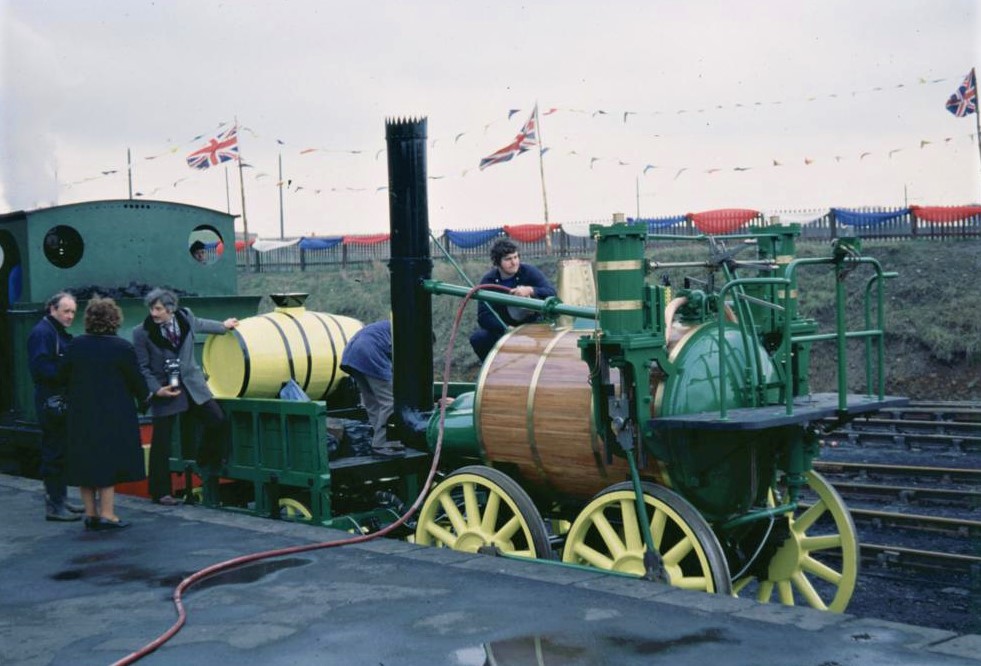
Below – the documentary ‘The Grand British Experimental Railway of 1830’ on YouTube.
New builds – Narrow Gauge Railway
It is perhaps not suprising that there have been a good number of narrow gauge locomotive new build projects completed, given the smaller nature of the project and the ability to hide such projects in garages and workshops across the land! Two of those listed here are arguably not new build, rather a continuation of their original builders range, albeit with something of a gap in production (in the case of Statfold and Jack Lane).
It is also harder to define new build in some narrow gauge contexts, for instance the Ffestiniog Railway’s continued production of locomotives needed for traffic – including the latter Earl of Merioneth (‘The Square’), Taliesin, Lyd and now James Spooner. They are new, but arguably again they are better defined as being constructed within the heritage era. We have also seen another Lynton & Barnstaple locomotive, Lyn, replicated (to an improved and enhanced design) and there are several other projects underway including two more L&B prairies, the North Wales Narrow Gauge Railway’s Gowrie single Fairlie and the Southwold Railway Trust’s ‘Southwold’, being built in Darlington for them.
These are a few of the projects underway or planned. Others include a new build recreation of the 1863 locomotive Mountaineer (the original was used on the Ffestiniog Railway), one of the Crewe Works Tramway 18″ gauge locomotives (Nipper – some of the parts are on display in Bury Transport Museum I believe).
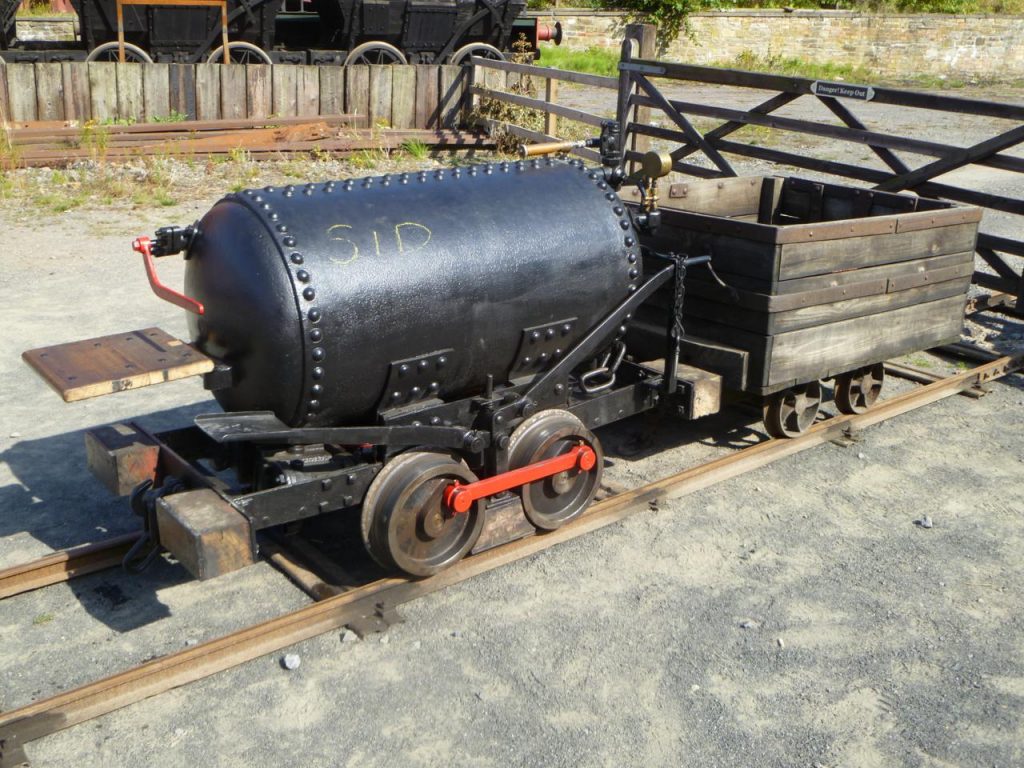
Interestingly, I believe that the cylinders for the replica were originally at Beamish, having been recovered from a steam winch on the Kennet & Avon canal! Issin Sid visited Beamish for the September 2010 Great North Steam Fair. After hours we ran Sid into the first section of the Mahogany Drift here at Beamish, as the gallery below shows.
For more information see: The Industrial Railways & locomotives of County Durham Part 1, by Colin Mountford and Dave Holroyde and published by the Industrial Railway Society in 2006.
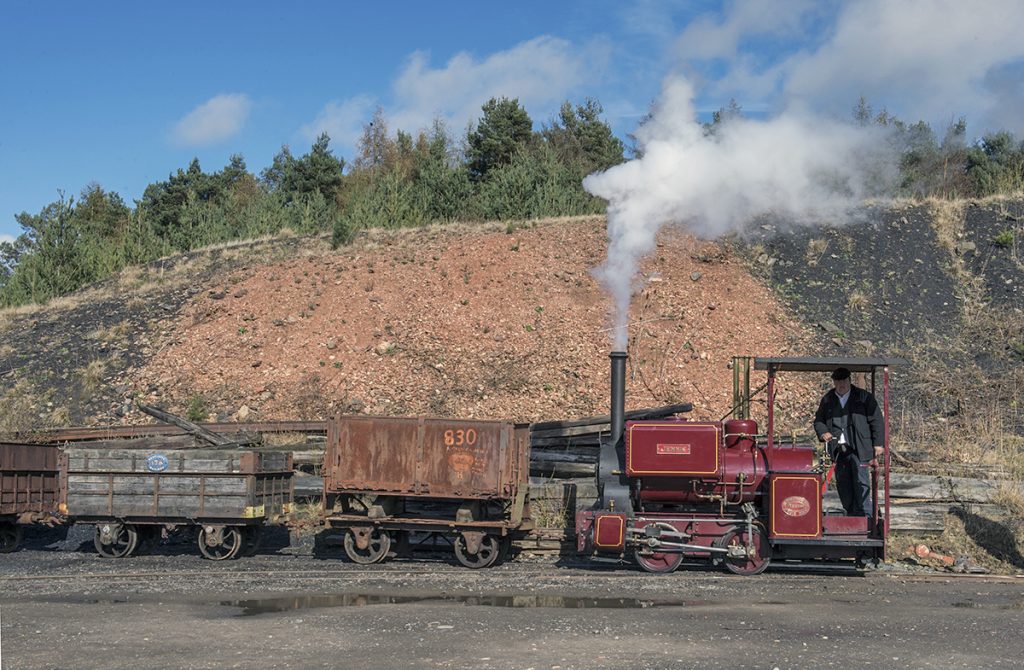
From the Amerton Railway website: Jennie is a Wren class locomotive as originally built by Kerr Stuart, but she was actually made by Hunslet Steam at their works at Statfold near Tamworth and was completed in 2008. She is an almost exact copy of the original design, the last one of which was built in 1941, again by Hunslet who had taken over the goodwill of Kerr Stuart in 1930. https://amertonrailway.co.uk/ Photo Dave Hewitt
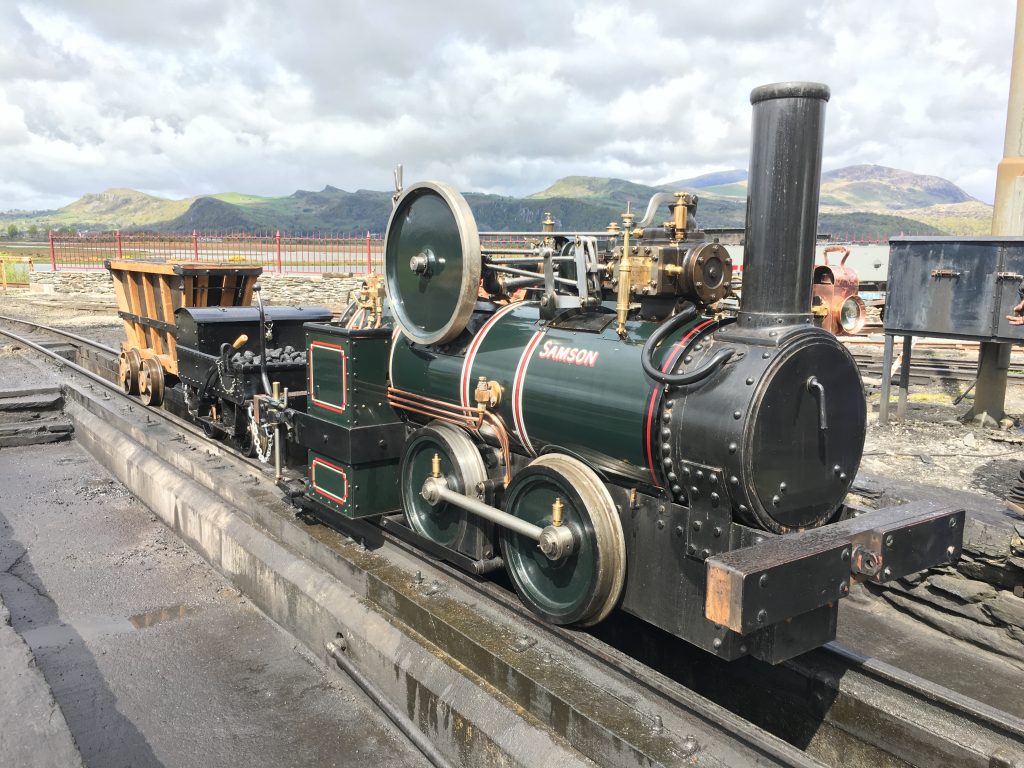
Related blog posts here: http://beamishtransportonline.co.uk/category/samson/
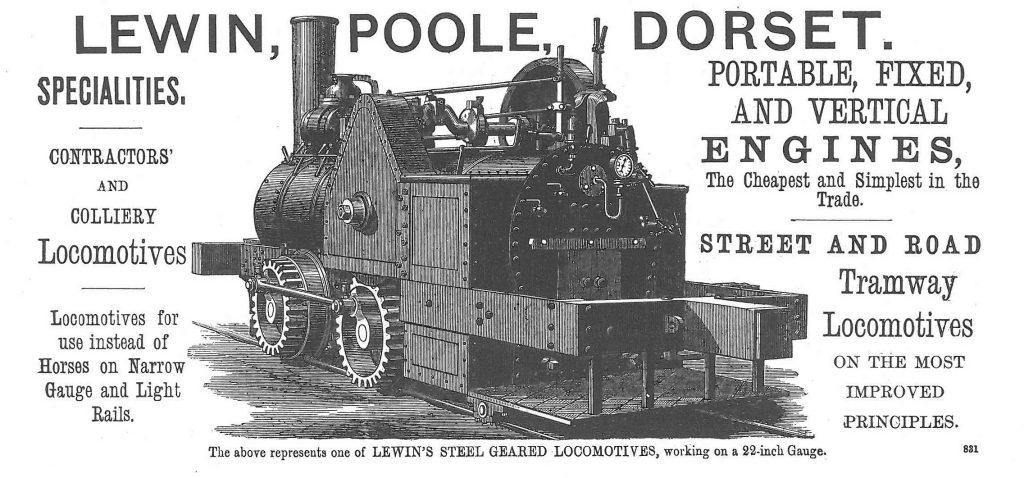
Stephen Lewin advert engraving 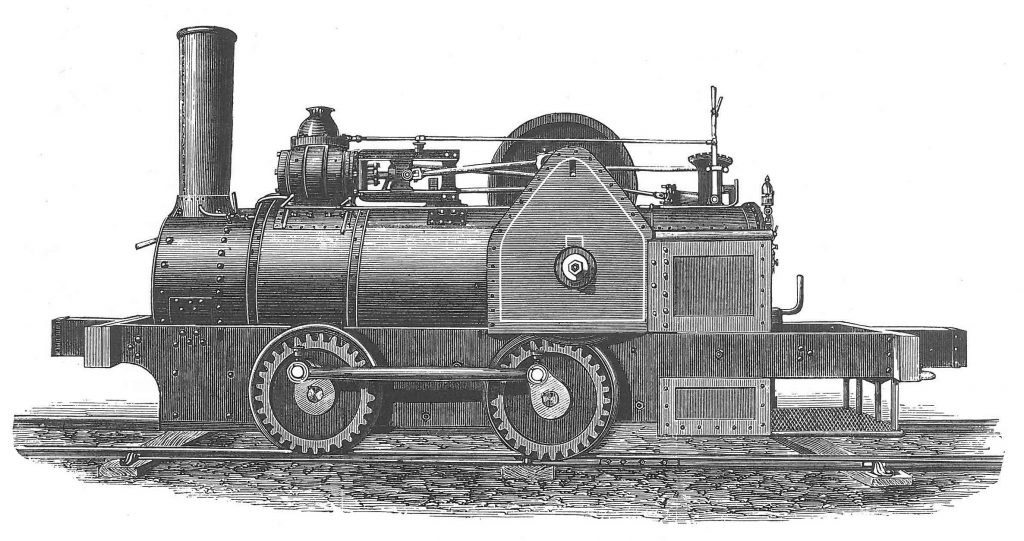
Another Stephen Lewin advert engraving. 
The sole known photogpraph taken at Cornish Hush 
Patterns for axleboxes 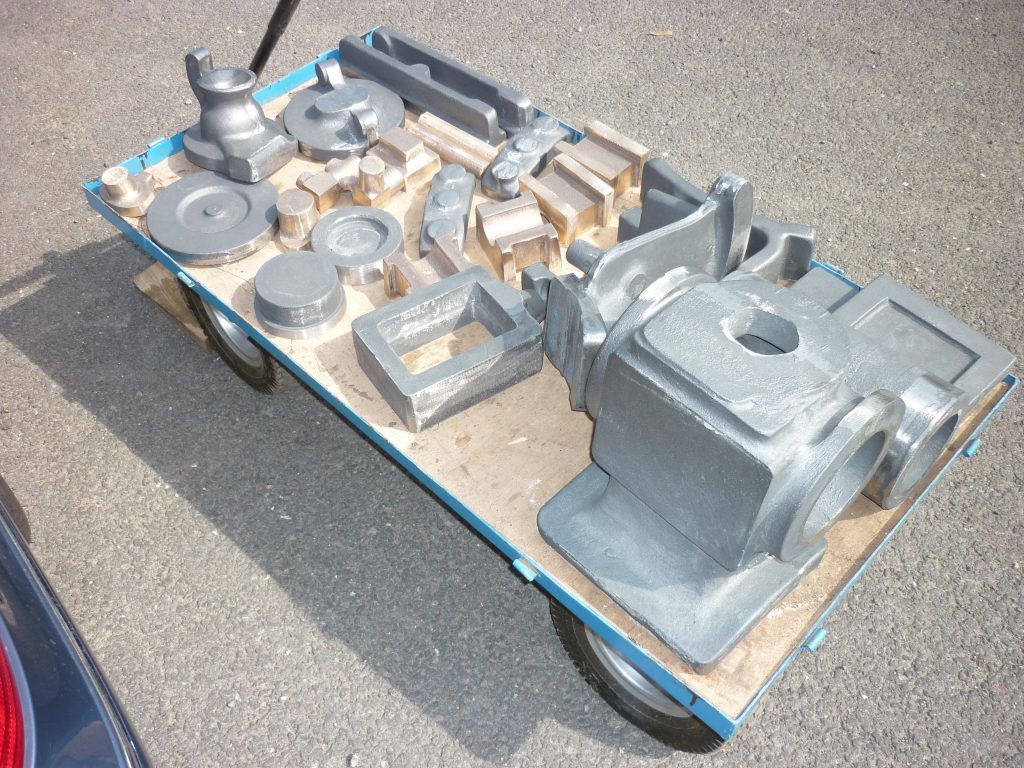
Raw castings for cylinder block 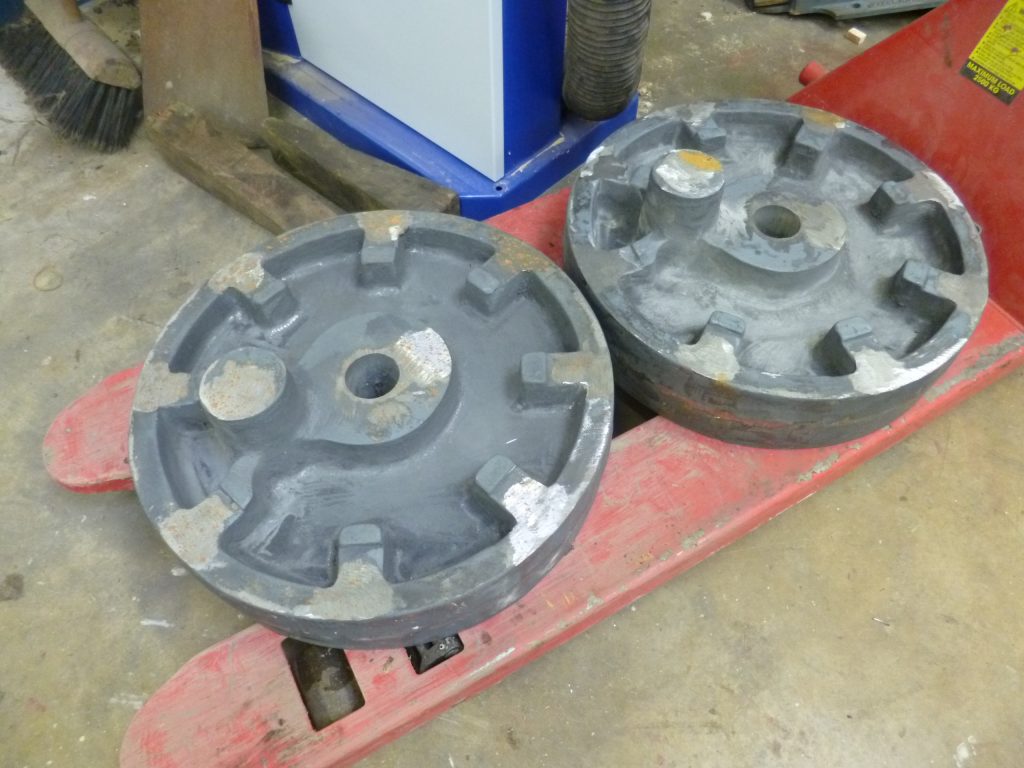
Raw castings for driving wheel centres 
Frame plates cut and laid out 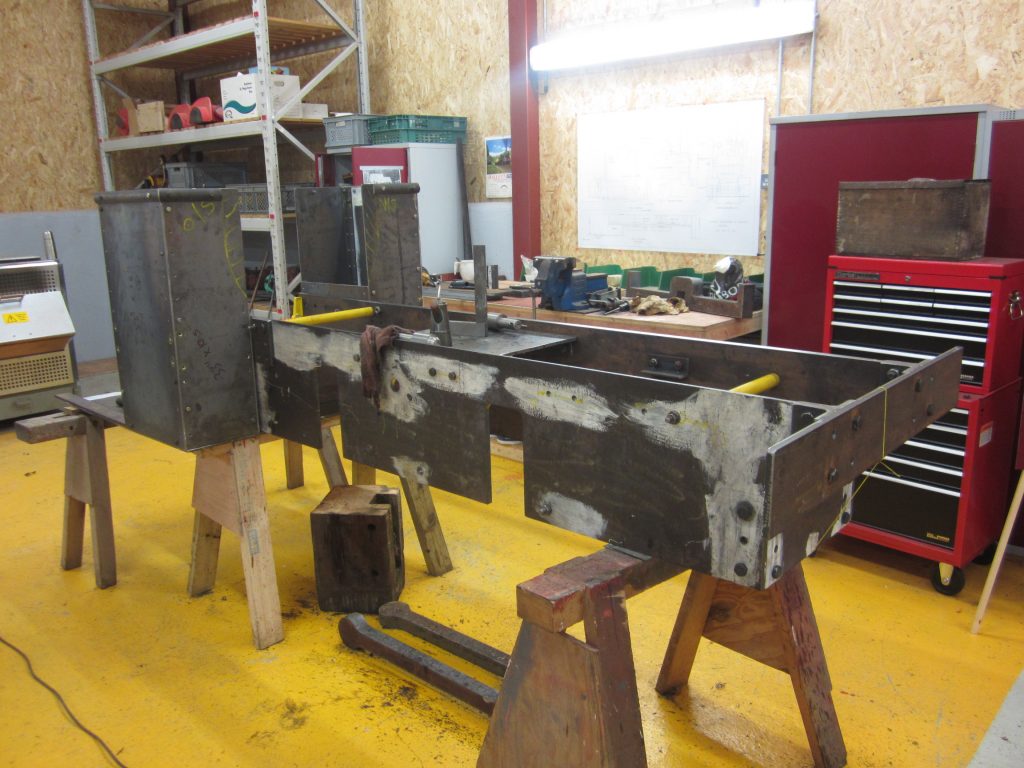
Frame plates bolted ahead of riveting. Bunkers completed. 
Chain drilling slot for valve gear expansion link 
Finished pump valve assembly 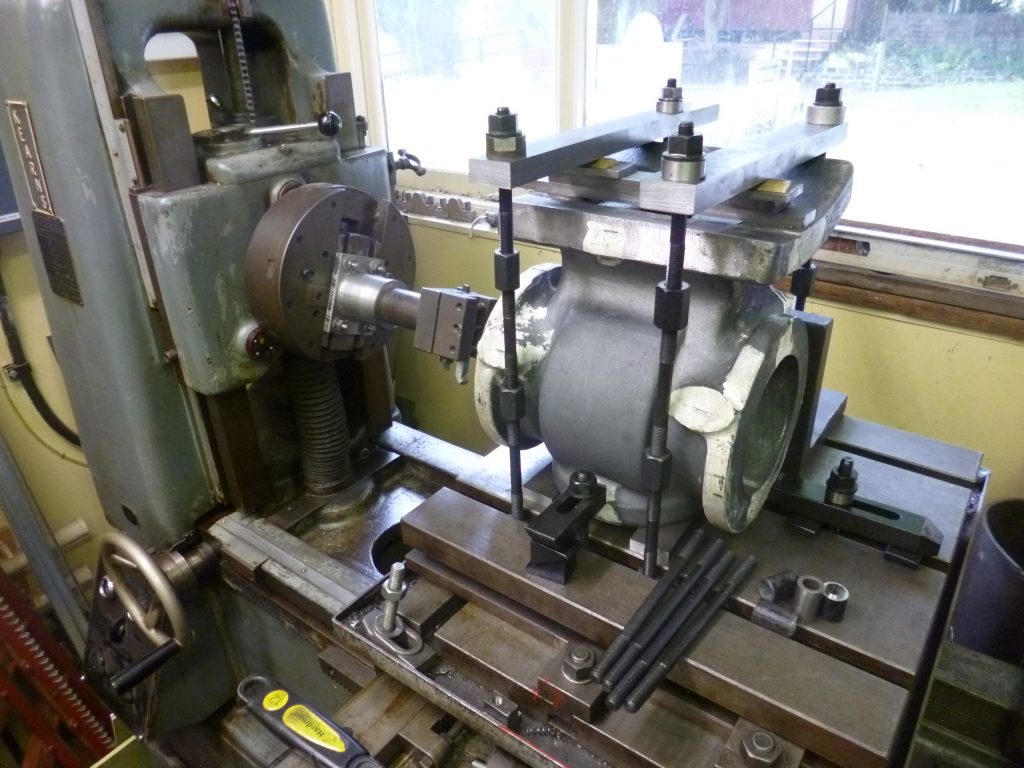
Boring cylinder block casting 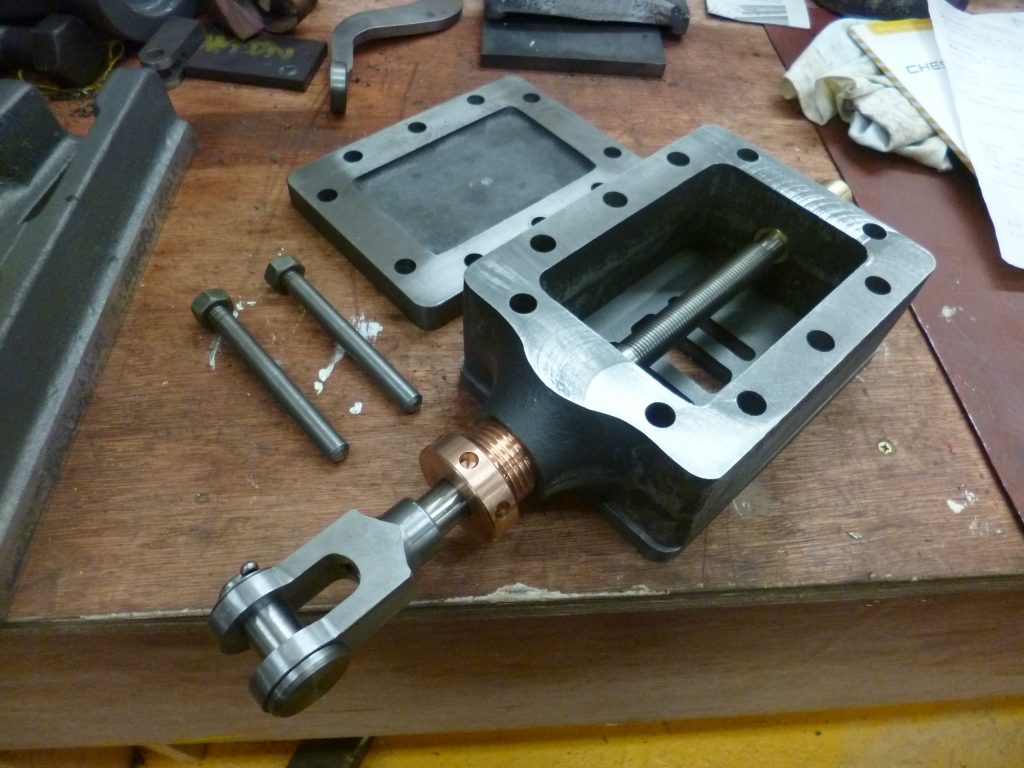
Assembling valve chest and rod 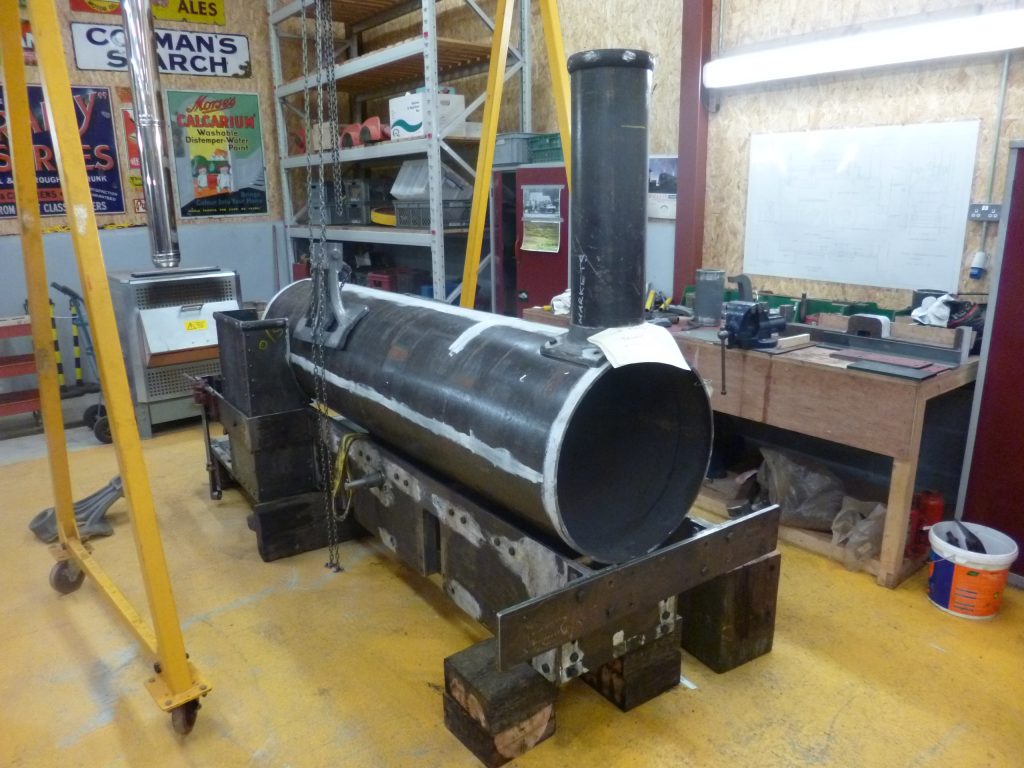
Trial fitting of boiler barrel 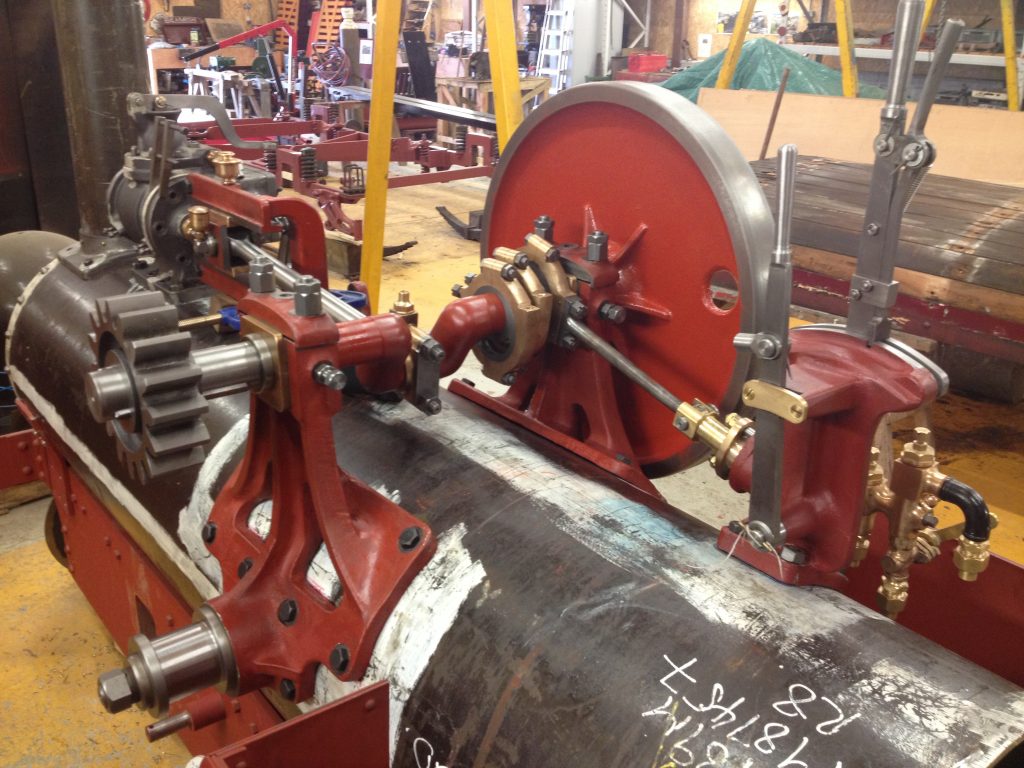
Assembled engine unit and flywheel, Tested on air 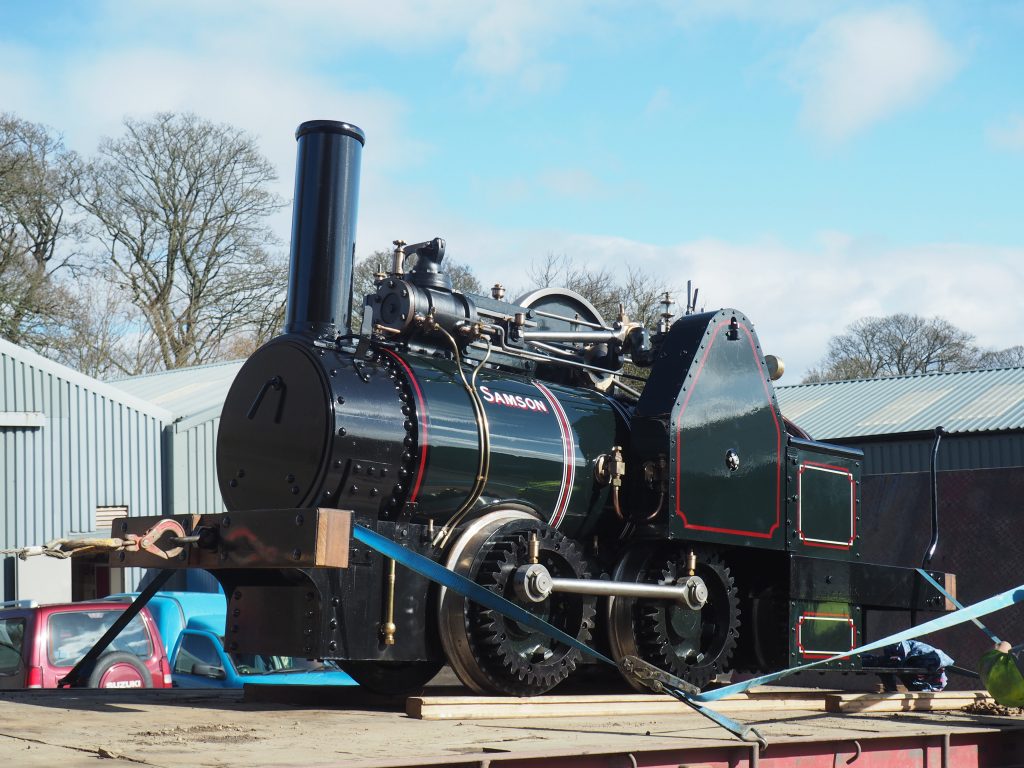
Brand new and factory fresh! 2016 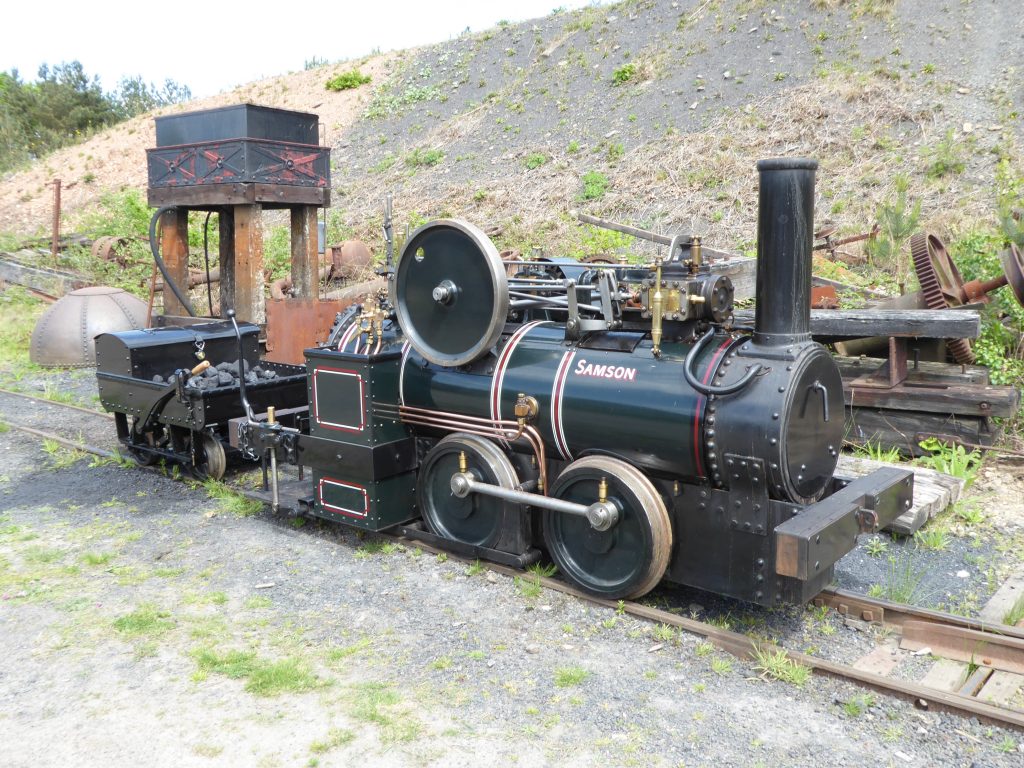
Running at Beamish, 2017 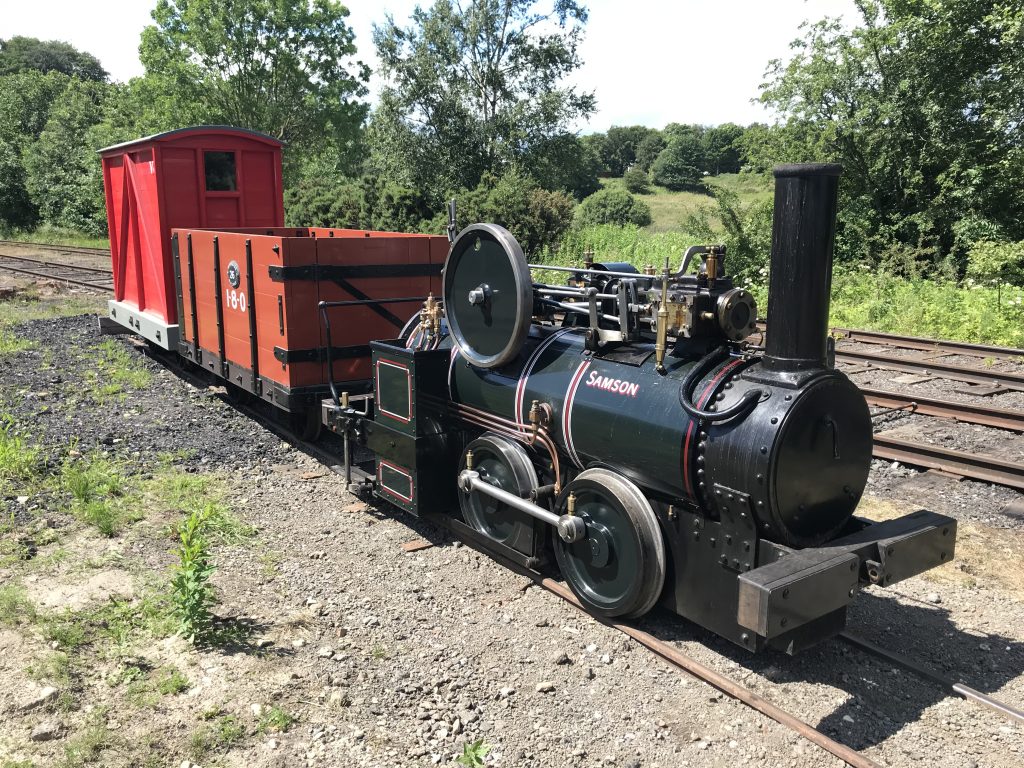
At work at Beamish, 2019 
Trial runs with new passenger carriages at Beamish, July 2019 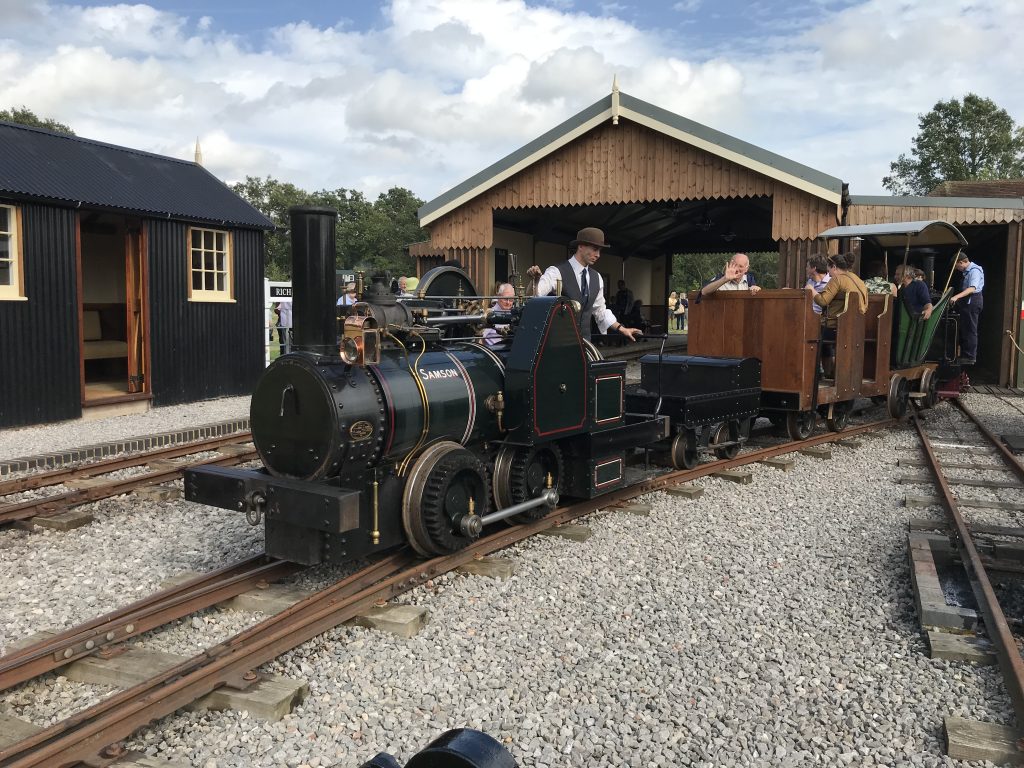
Richmond Light Railway August 2019 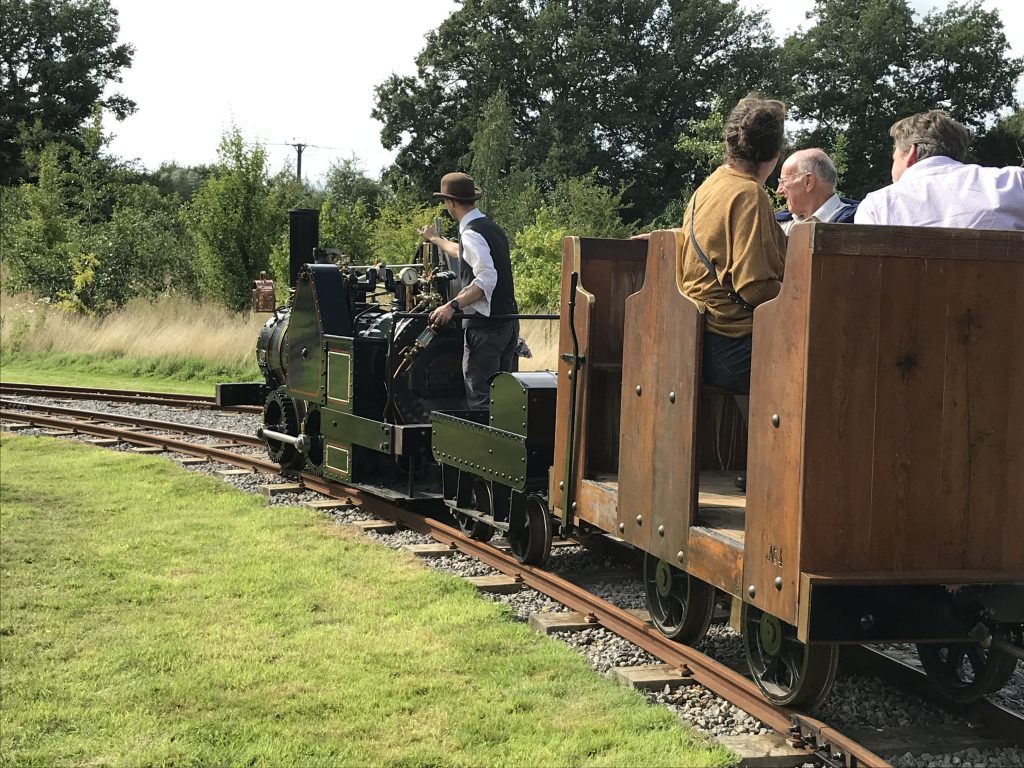
Richmond Light Railway August 2019 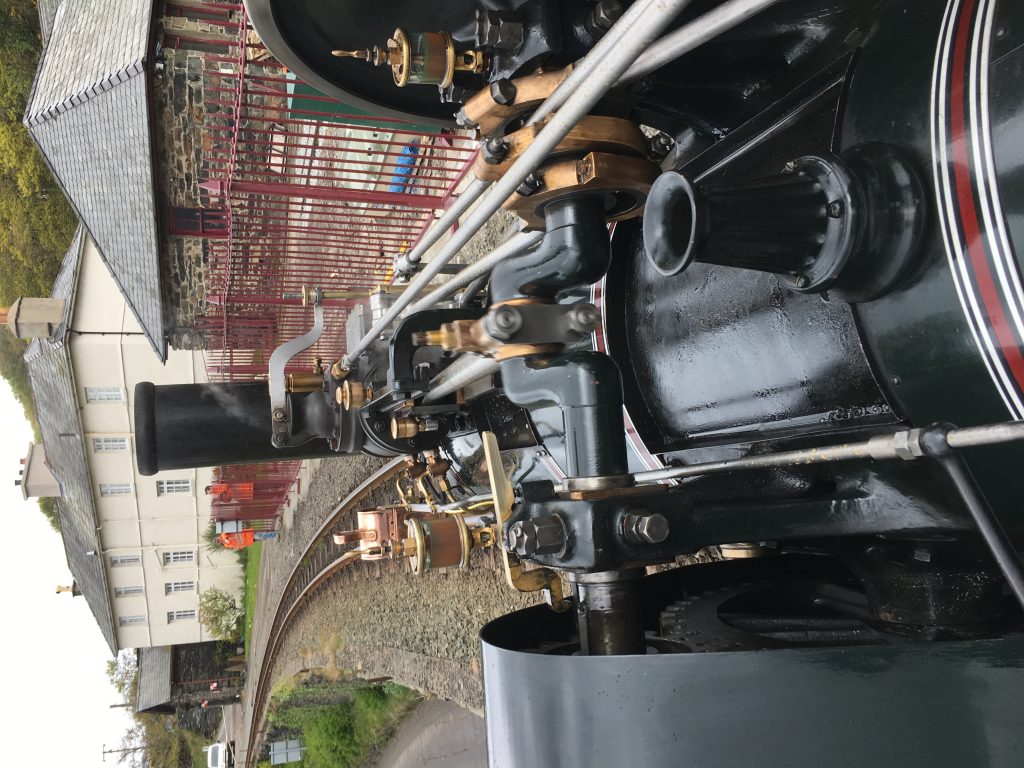
Departing Boston Lodge on the Ffestiniog Railway 
At rest, Minffordd goods shed, Ffestiniog Railway 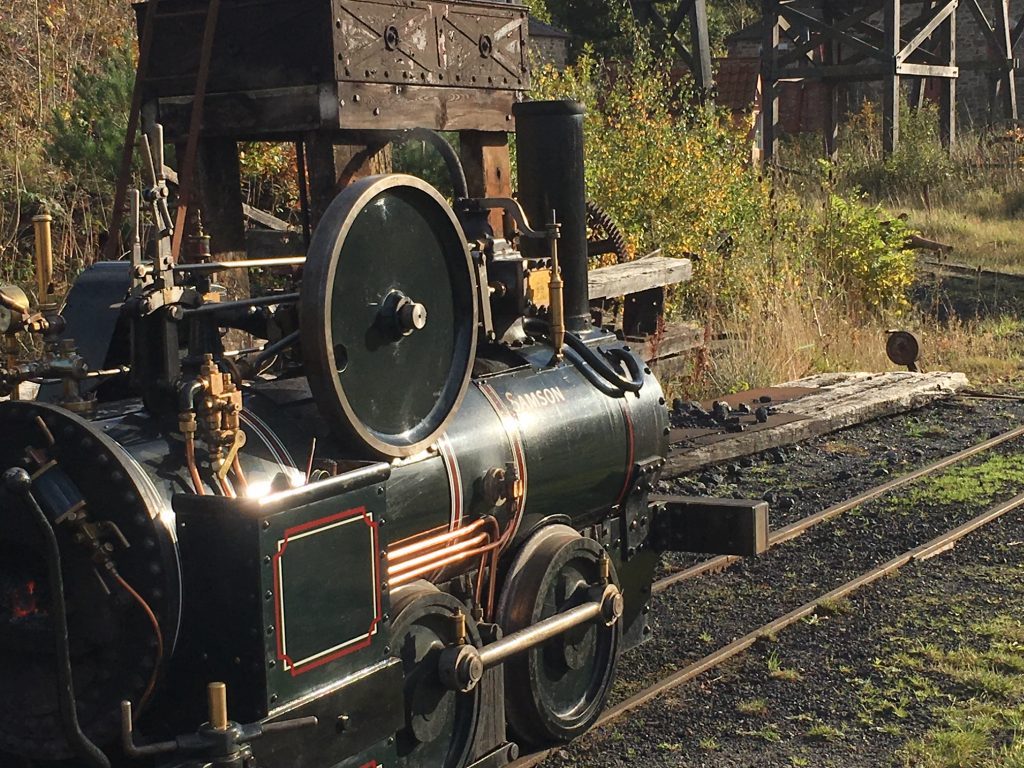
Afternoon sunshine at Beamish 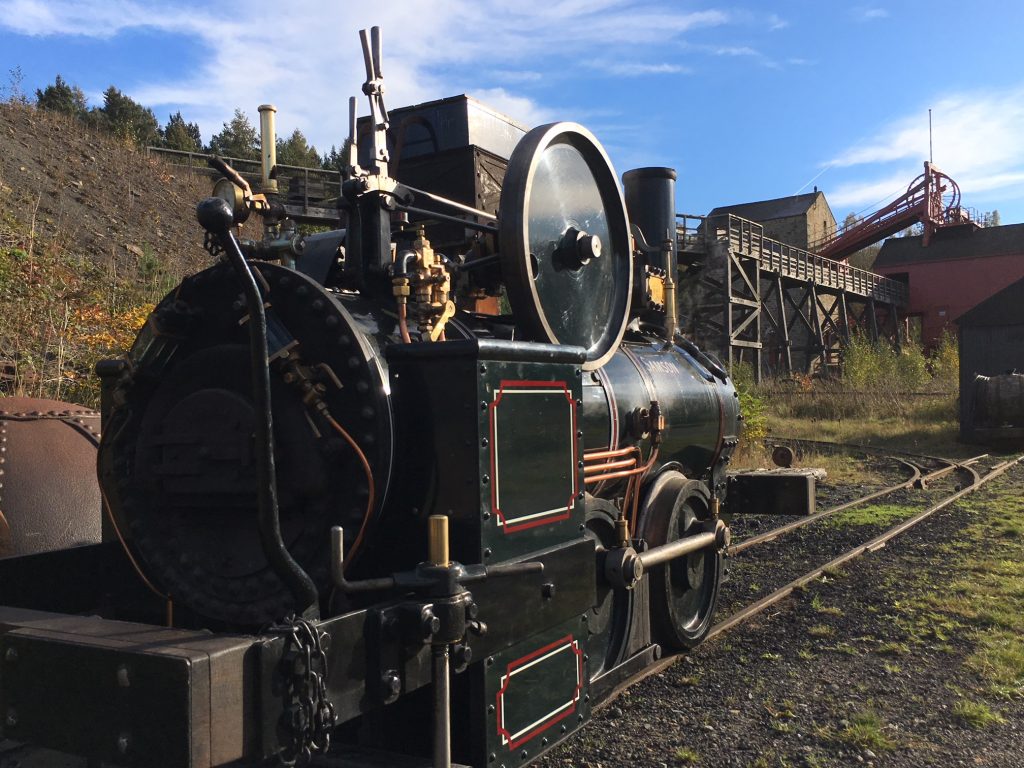
At home, Beamish Colliery stockyard railway 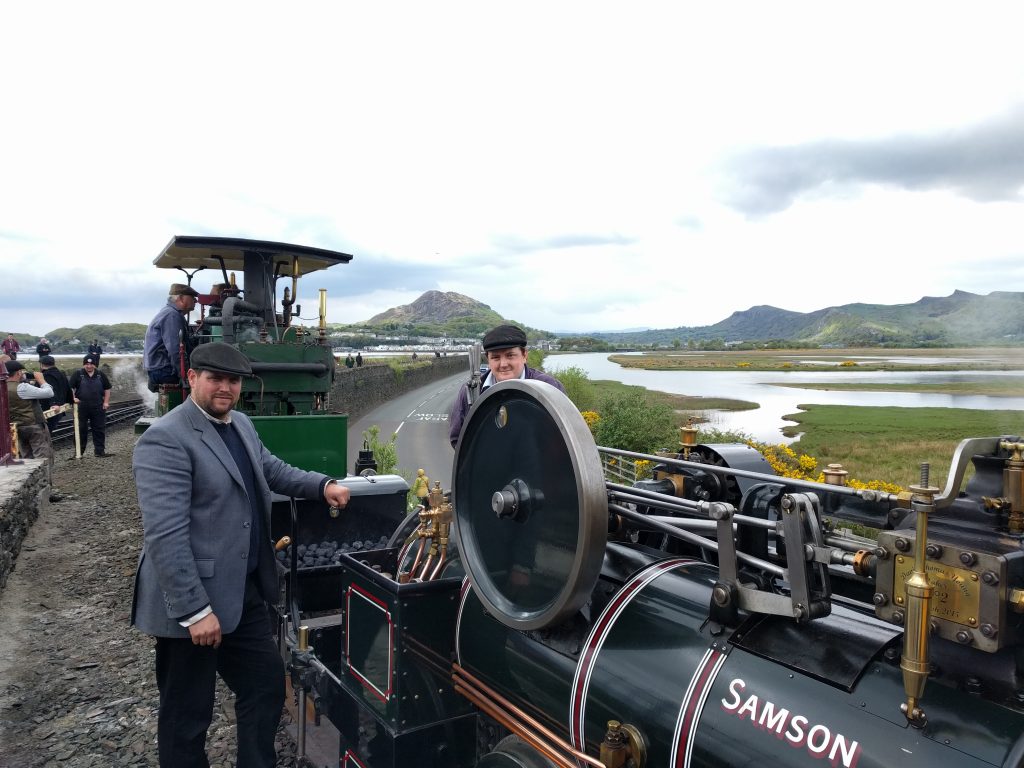
Parade – Quirks & Curiosities May 2017 
Ffestiniog Railway May 2017
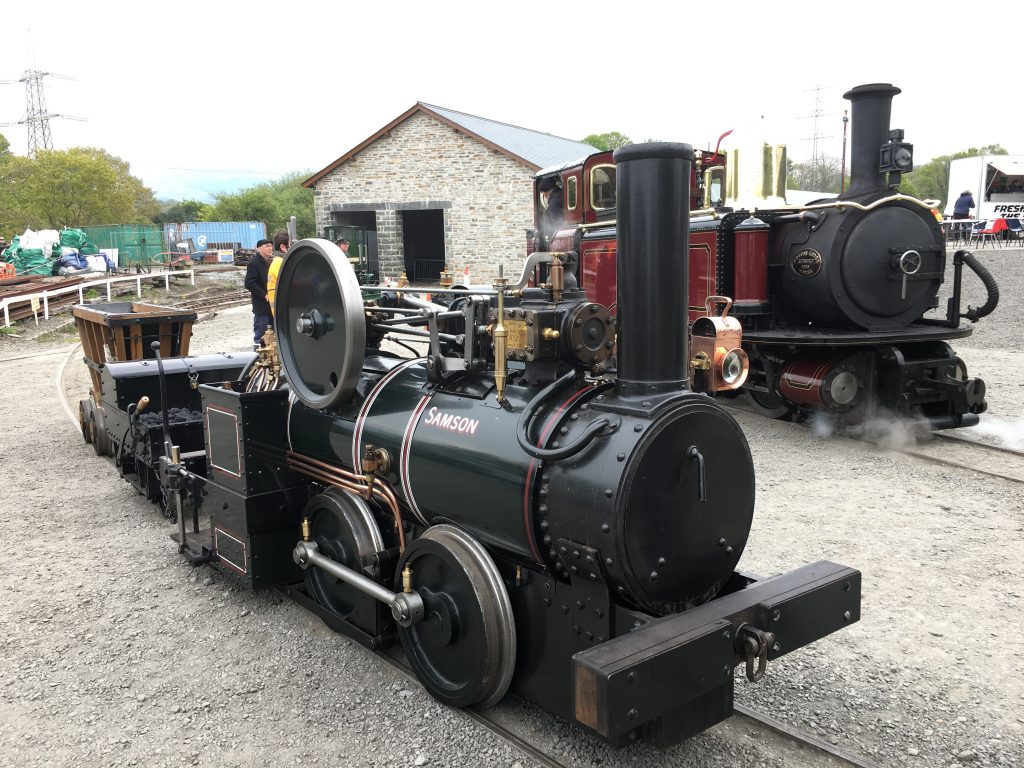
https://www.festipedia.org.uk/wiki/Taliesin_III
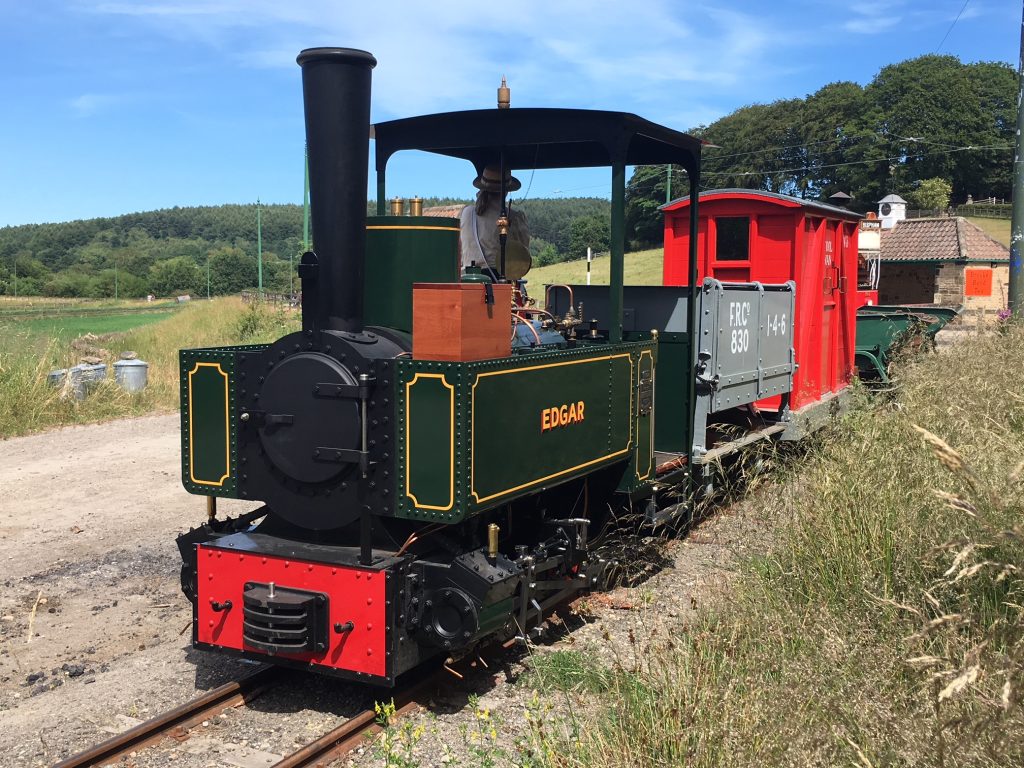
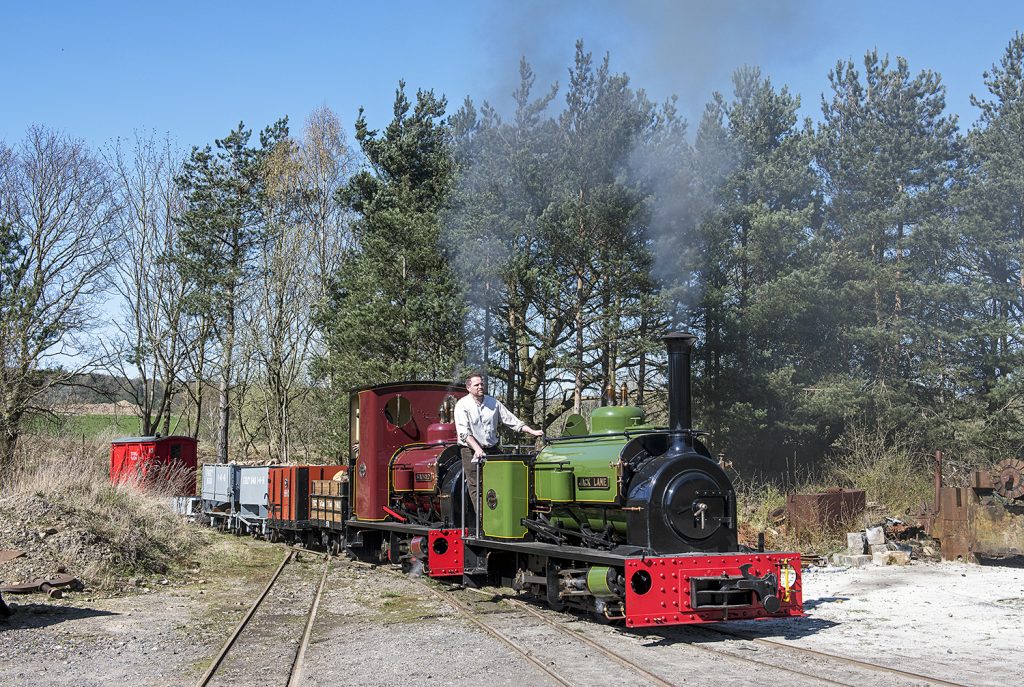
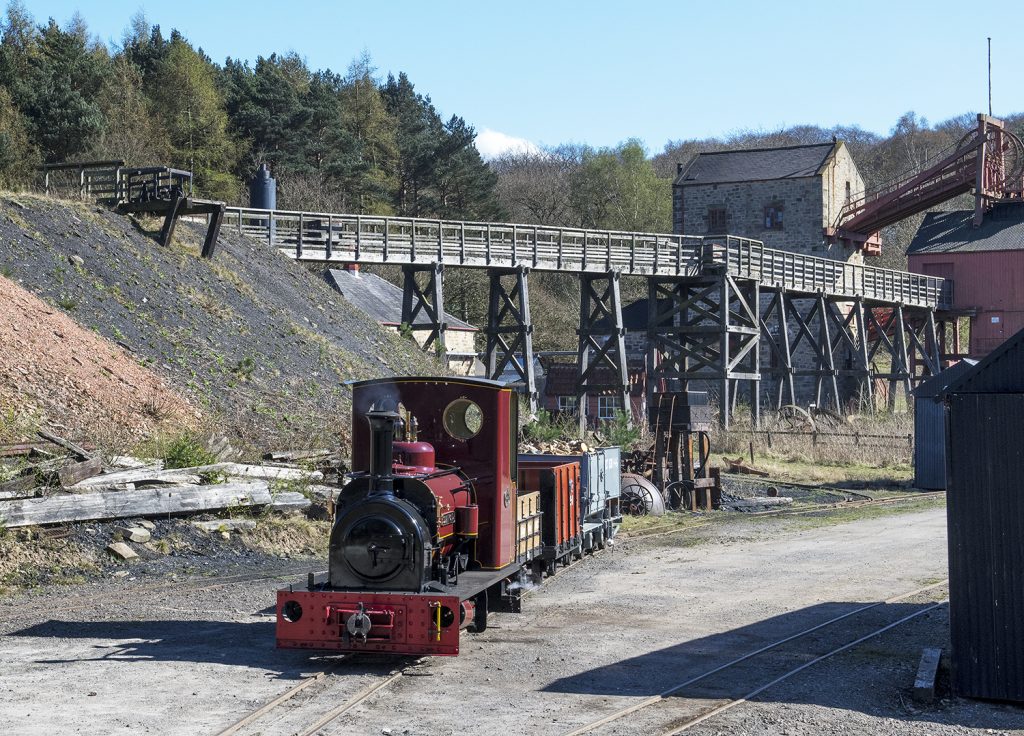
Final thoughts…
We might, at this point, also consider what new builds we might see at Beamish in the future. There is a long-standing invitation to bring the replica of Catch Me Who Can (the original was built by Richard Trevithick in 1808) and which is nearing the end of its construction at the Severn Valley Railway, where its owning group, the Trevithick 200 Charity, are based. I would hope that we will see any future early railway new build projects operate at Beamish in the future – the Waggonway being the perfect setting for them. Certainly the project proposed by the Friends of Darlington Railway Museum to build a 21st Century version of Royal George is an interesting one.
There will probably always be a steady stream of new build narrow gauge locomotives. I would love to see the new Mountaineer project visit Beamish, this being a recreation of the Festiniog Railway (one F in the 1860s) 0-4-0T+T (the original was built in 1863 and was not rebuilt at the FR as the other George England-built locomotives were, but was withdrawn in 1879, some of its components being reused on the other locomotives).
We also have our own aspirations to recreate one of the two foot gauge Crewe Tractors (based on a Model T Ford) used in the First World War, for which the road vehicle element has already been created (and is in regular use, as blog readers will know). This will certainly be Beamish’s next new build, and probably the last for some time to come.
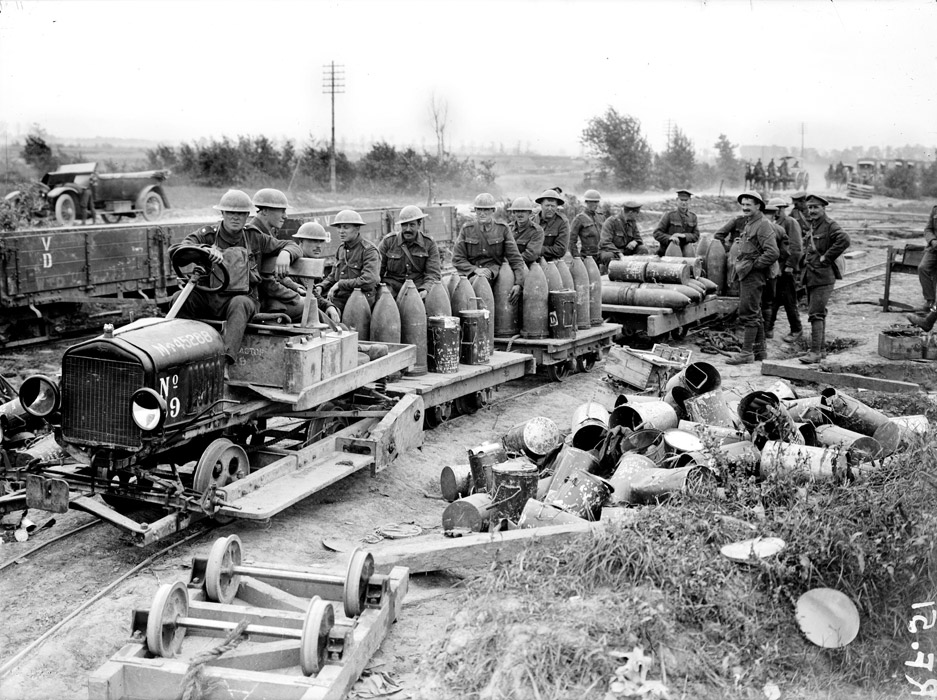
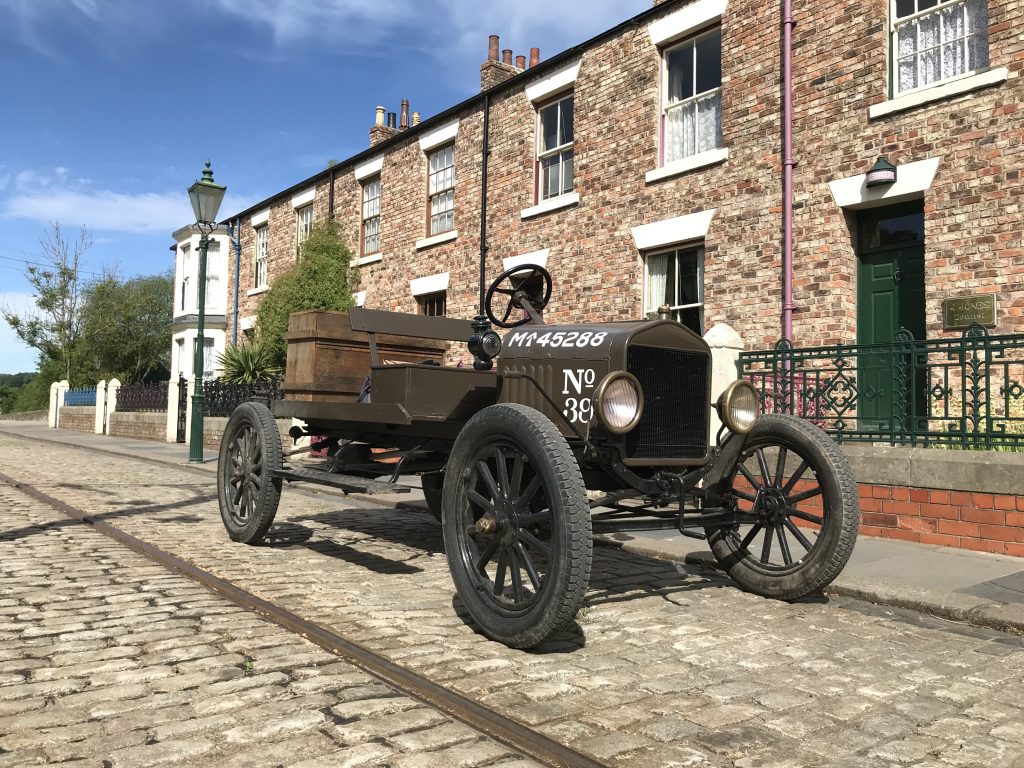
That makes quite a list – 13 in total to date. This must be something of a record for one location?!
NB: Apologies for the misalignment of the galleries – they look fine when I create them, then move to the right when I publish the post. Straightening them out is beyond my IT ability!
Some links to other websites may be of interest:


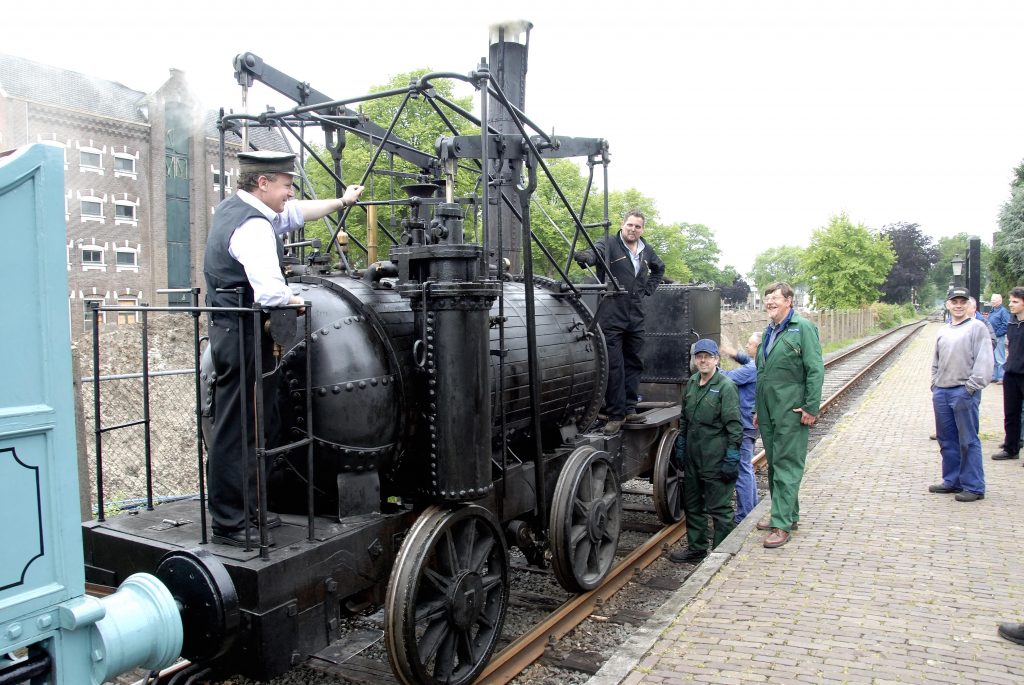

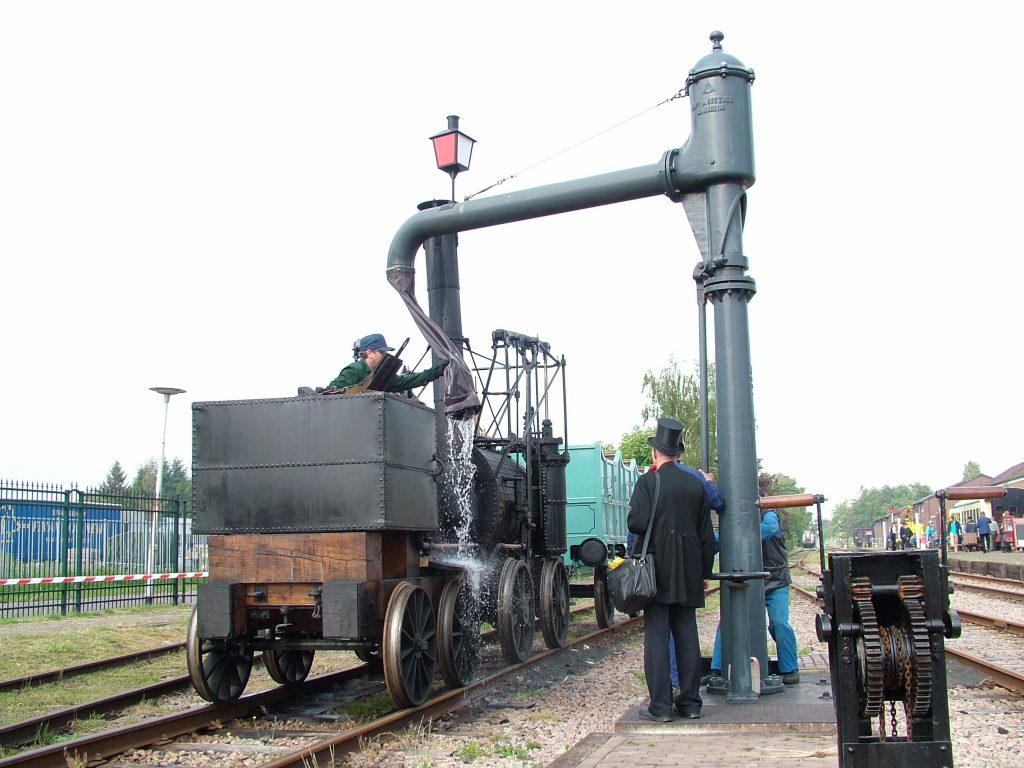


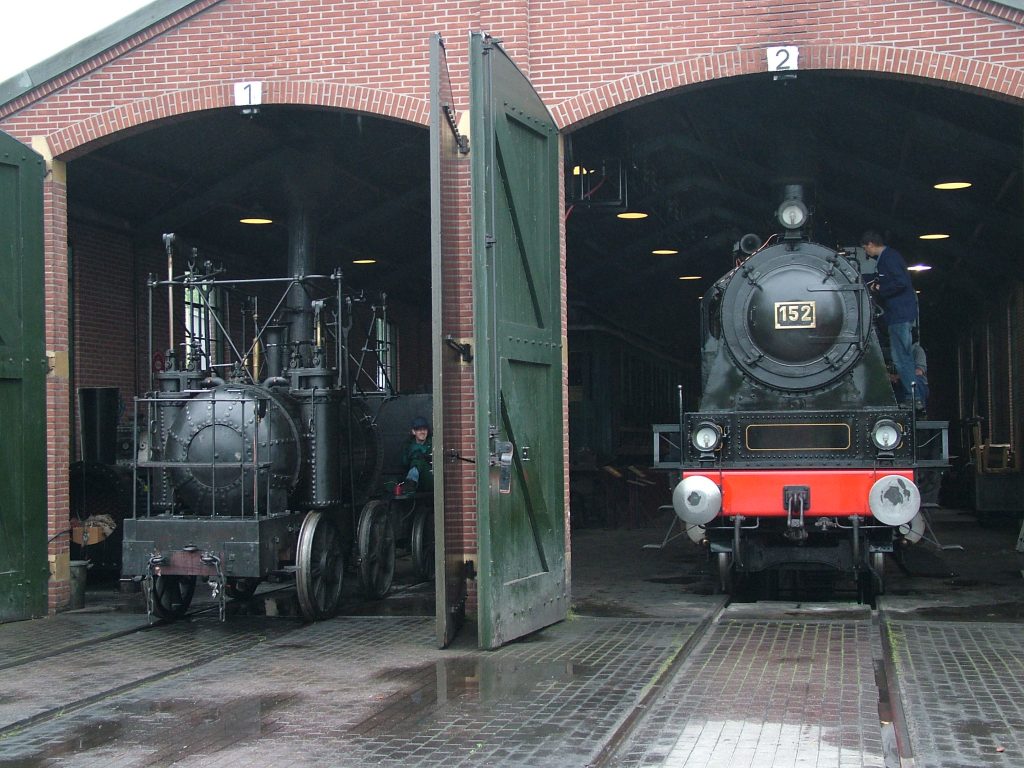

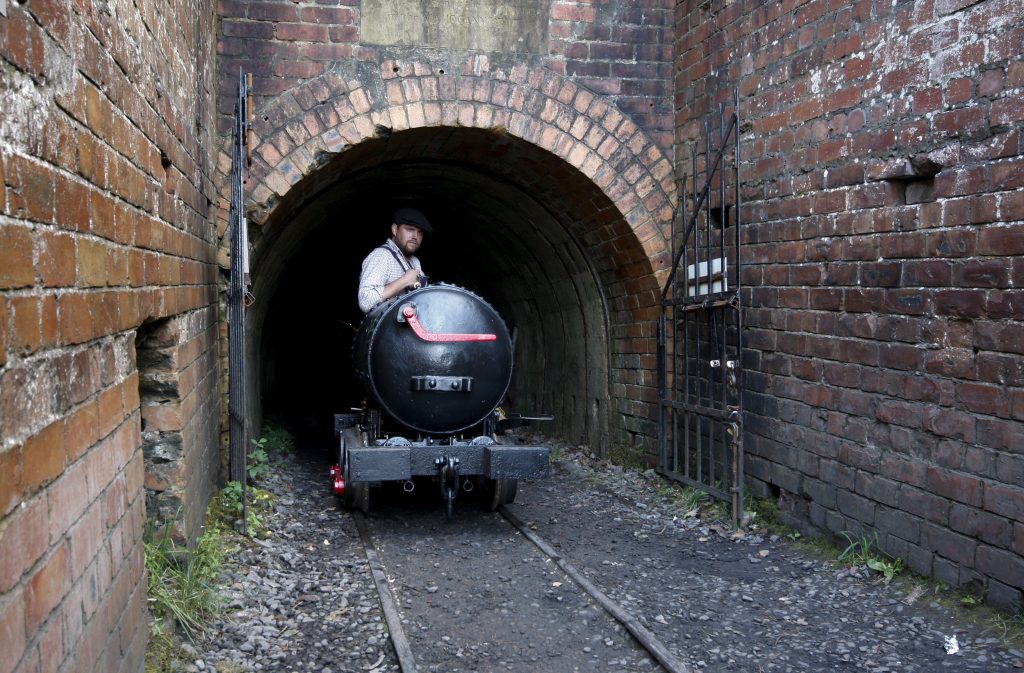


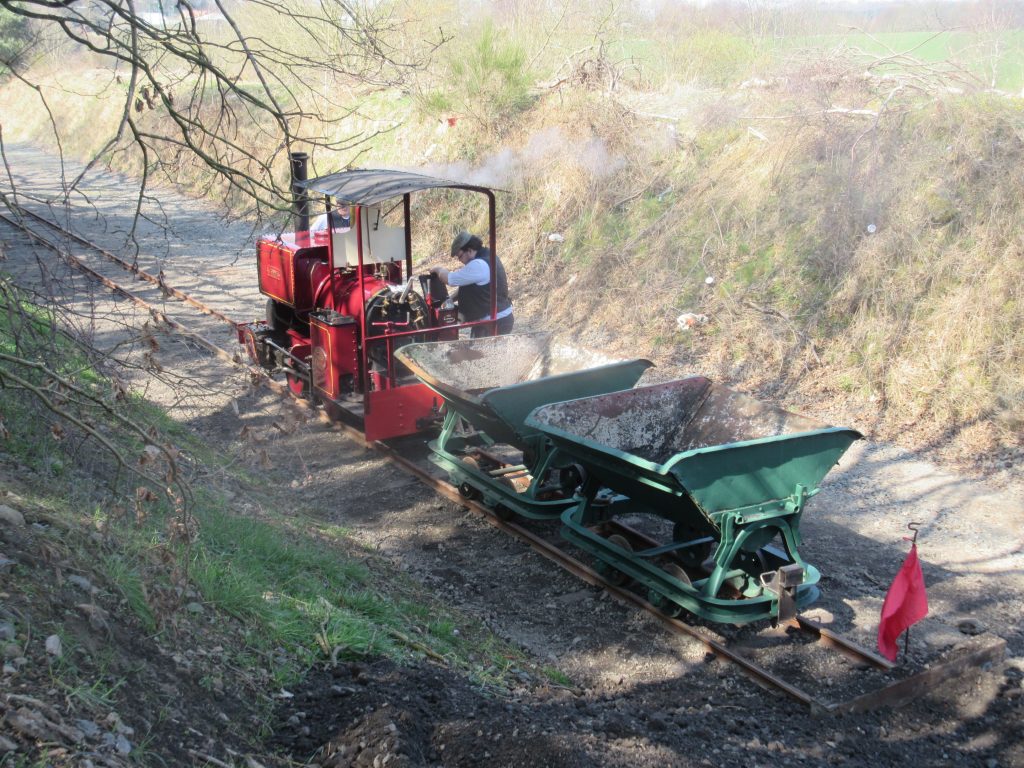
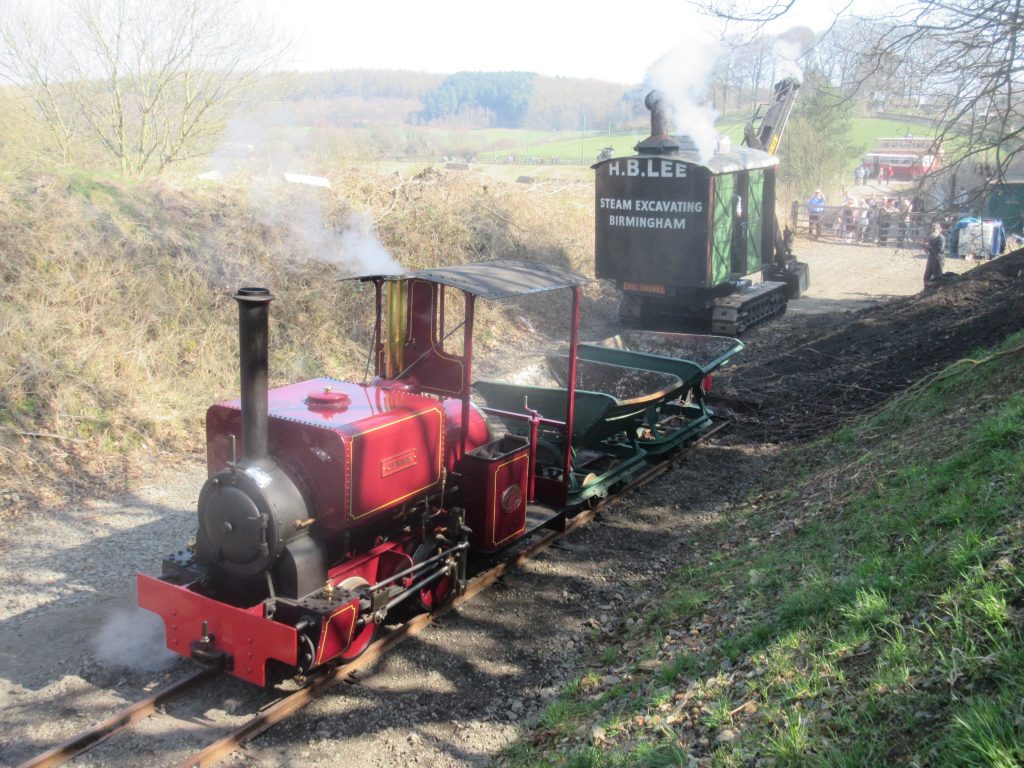





Hi Paul, you were wondering what the replicas of Sans Pareil and Novelty were doing at Rowley Station, well they were filming a recreation of the Rainhill Trials for a 1980 BBC documentary called ‘The Grand British Experimental Railway’, which covered the history of the Liverpool and Manchester Railway. The documentary can be found on YouTube.
Cheers,
Alex Tyson
Thanks Alex – I’ve updated the post to reflect this now…